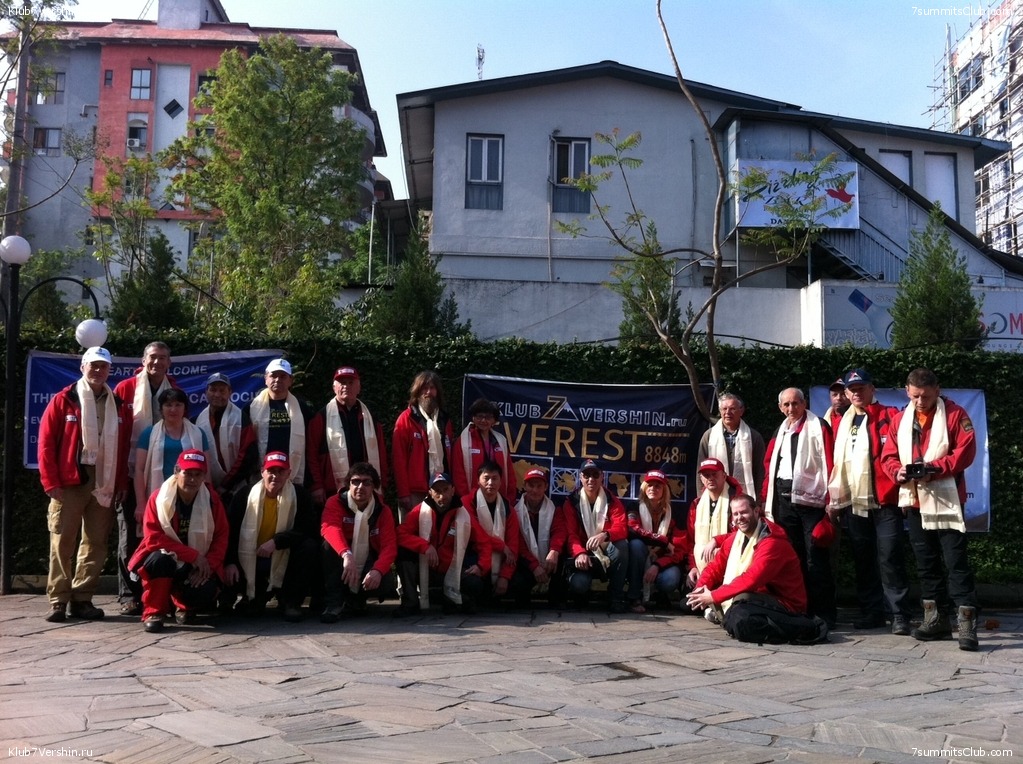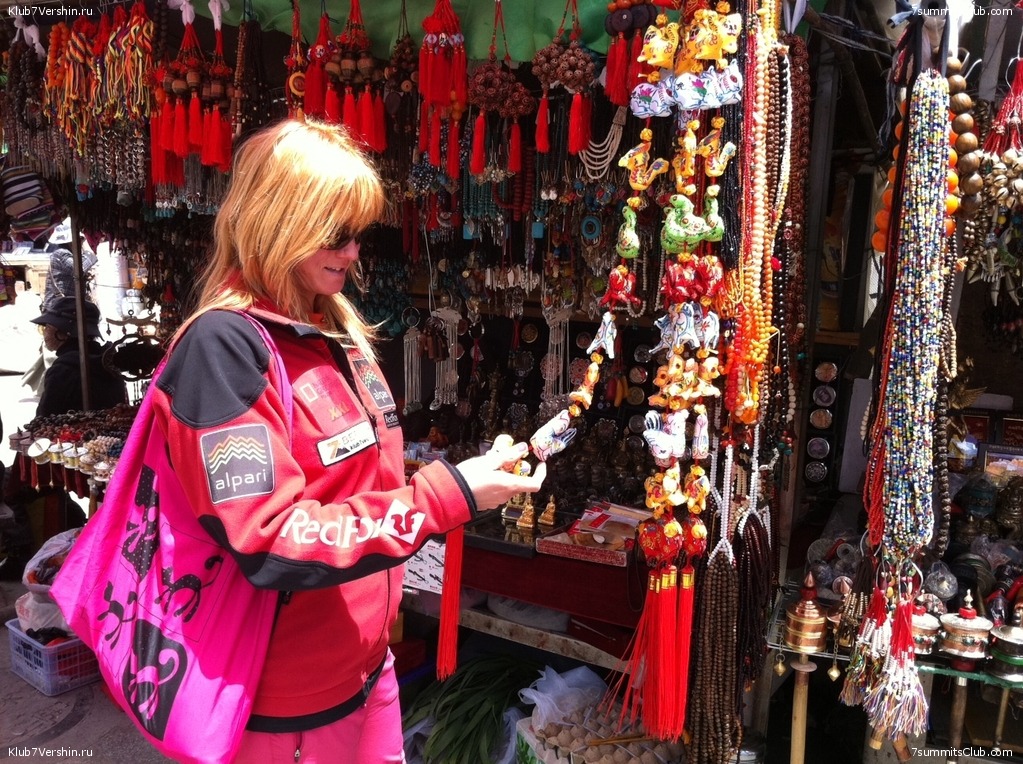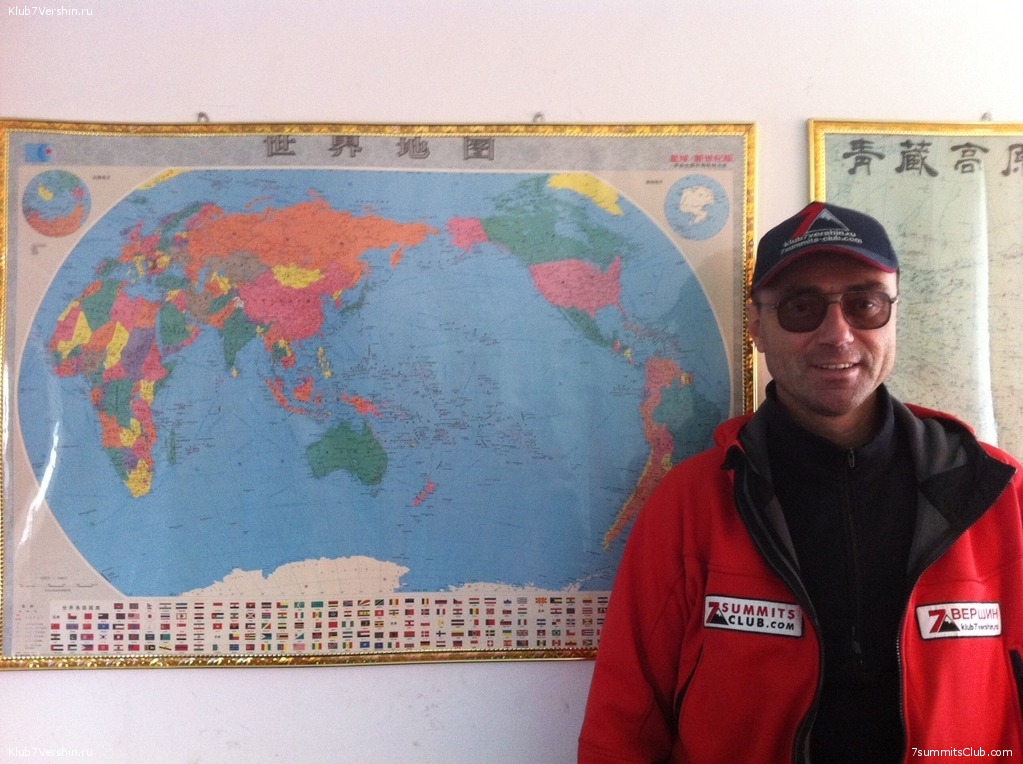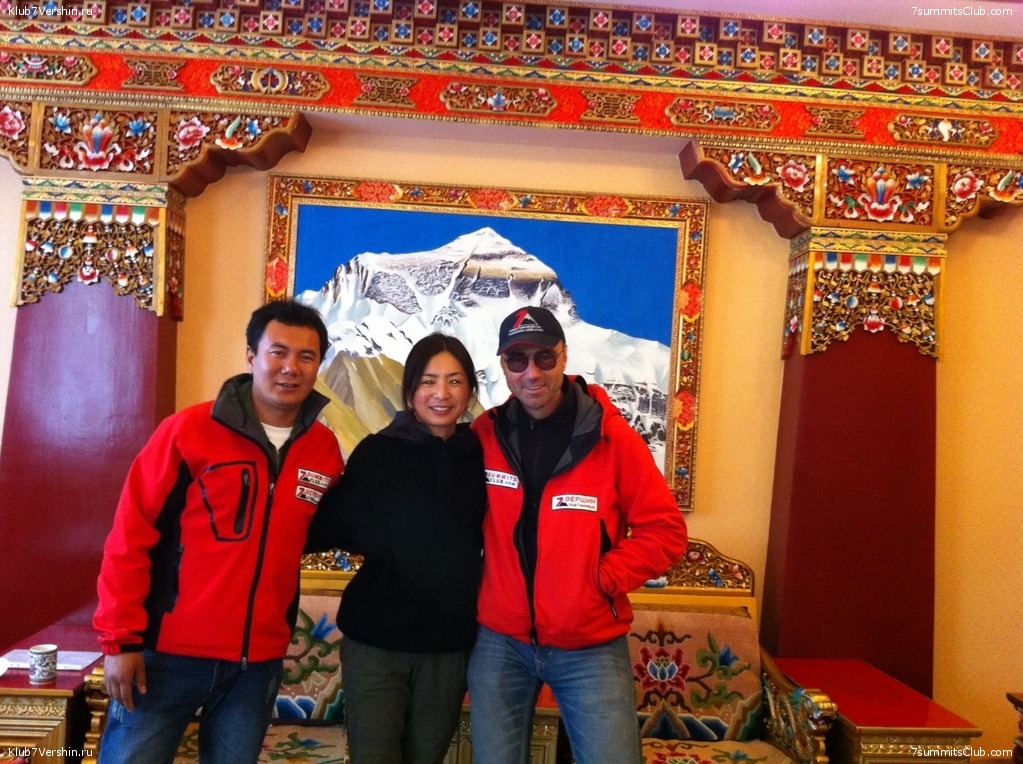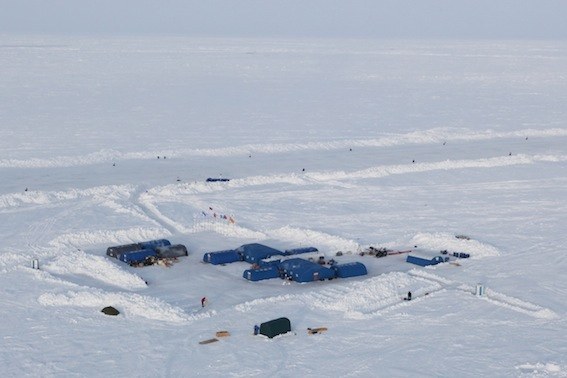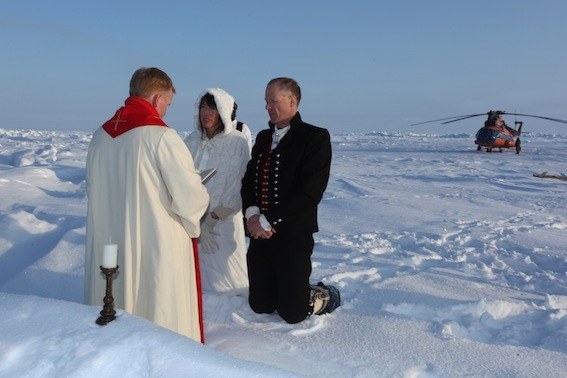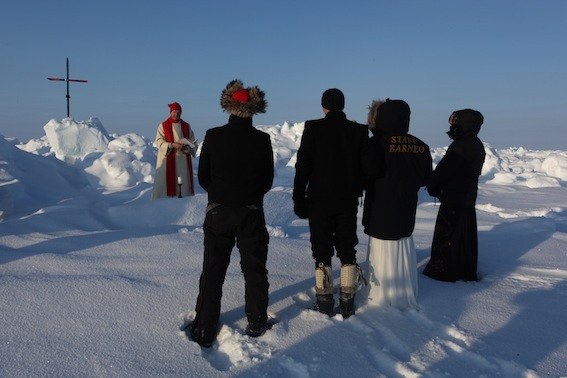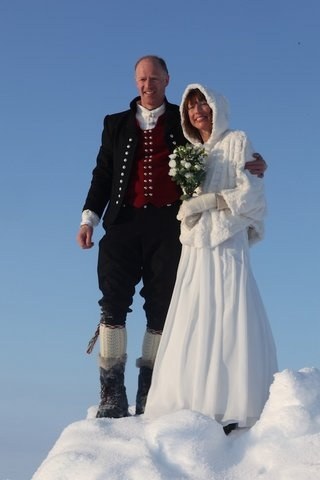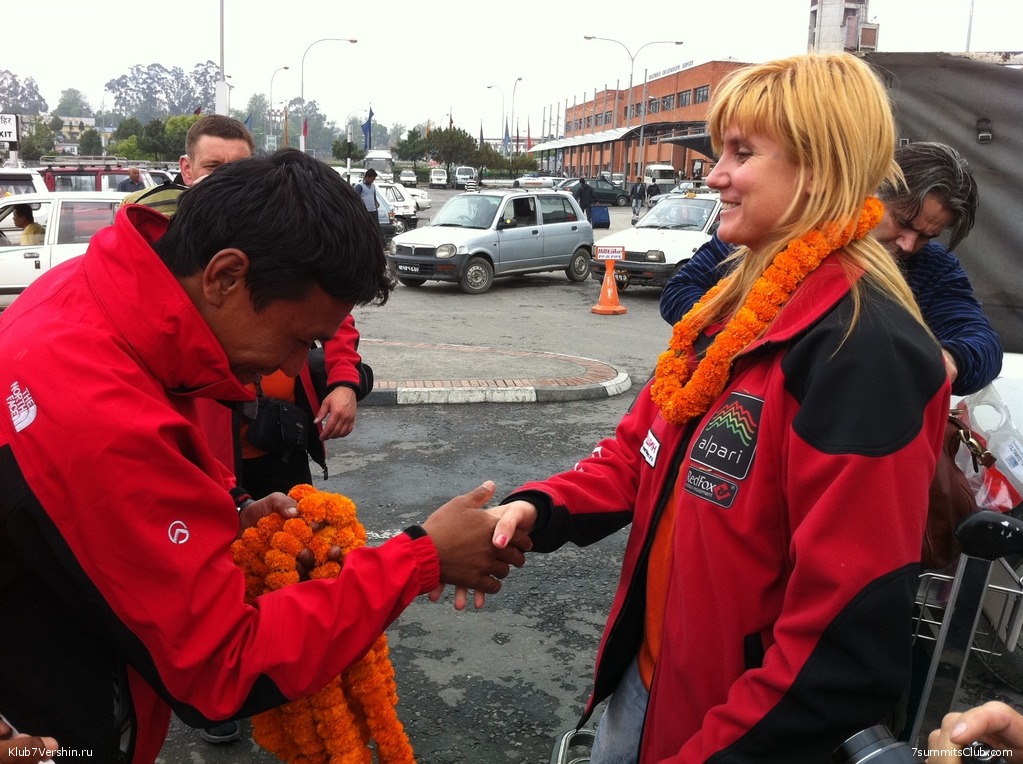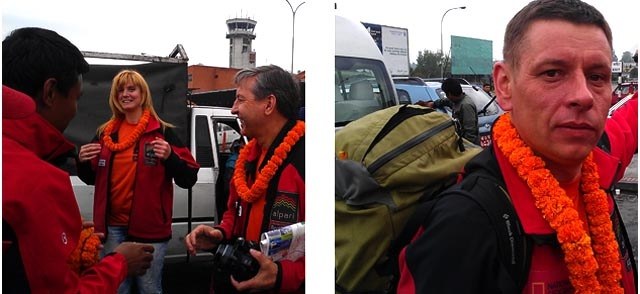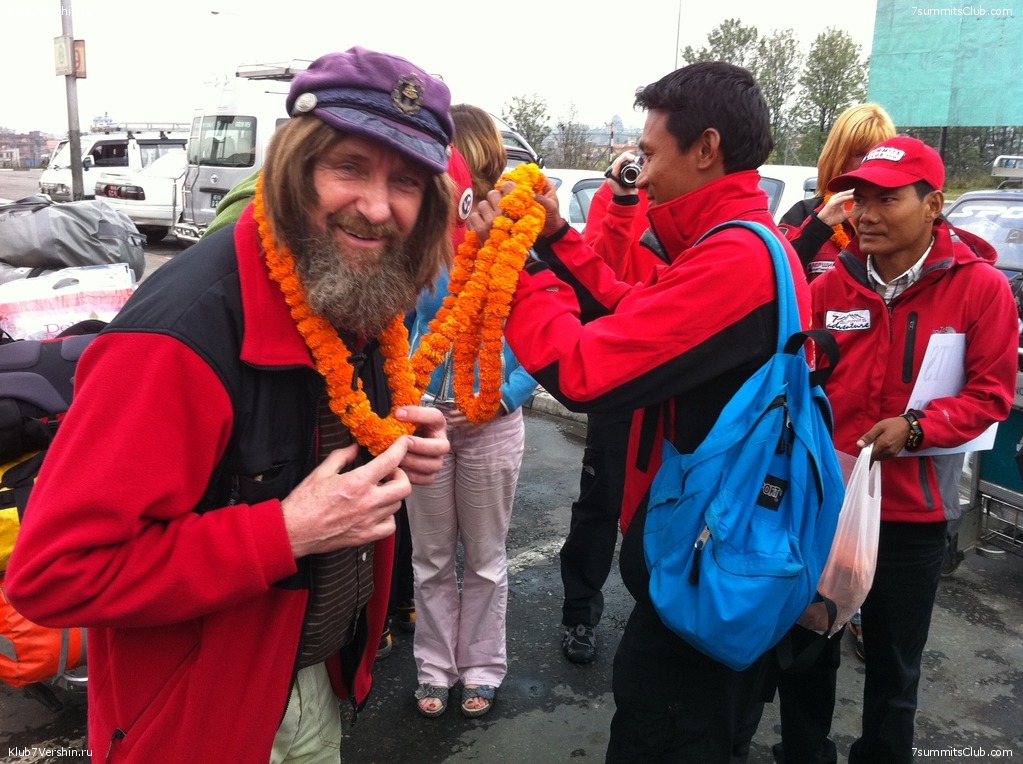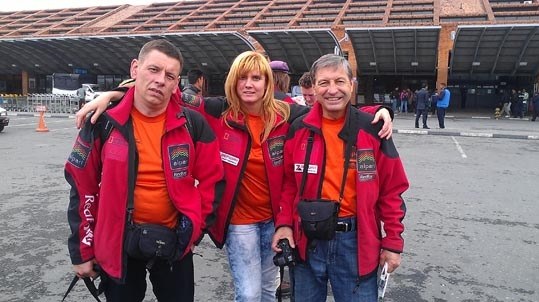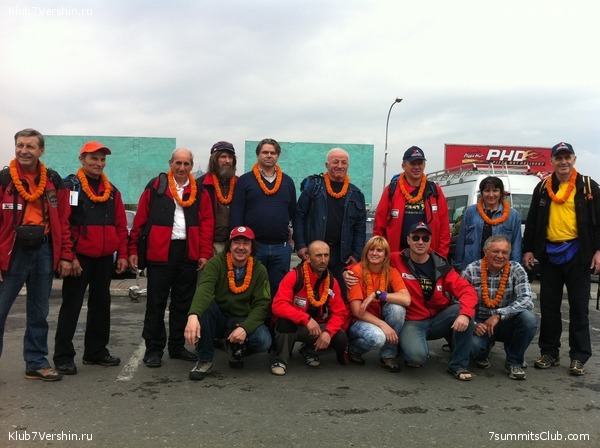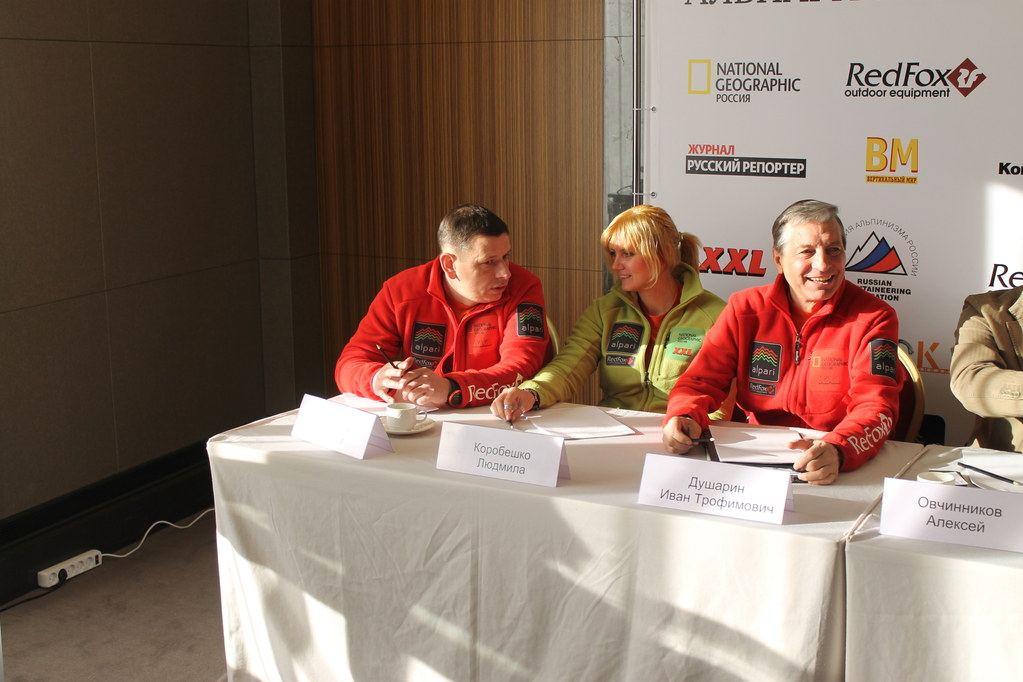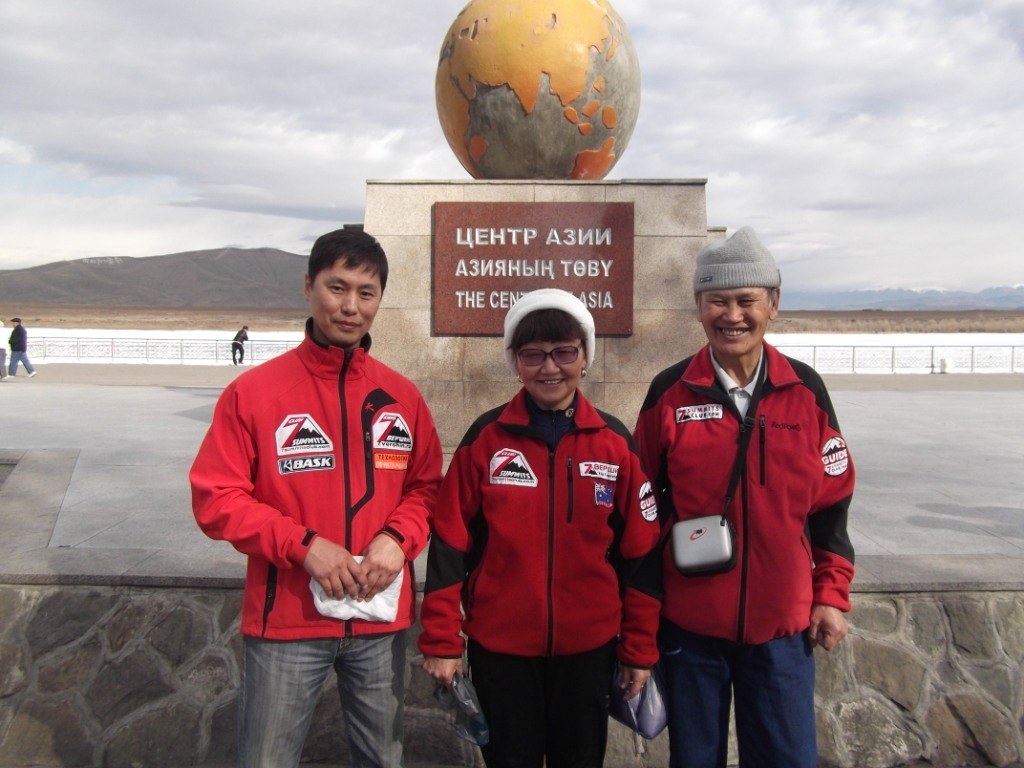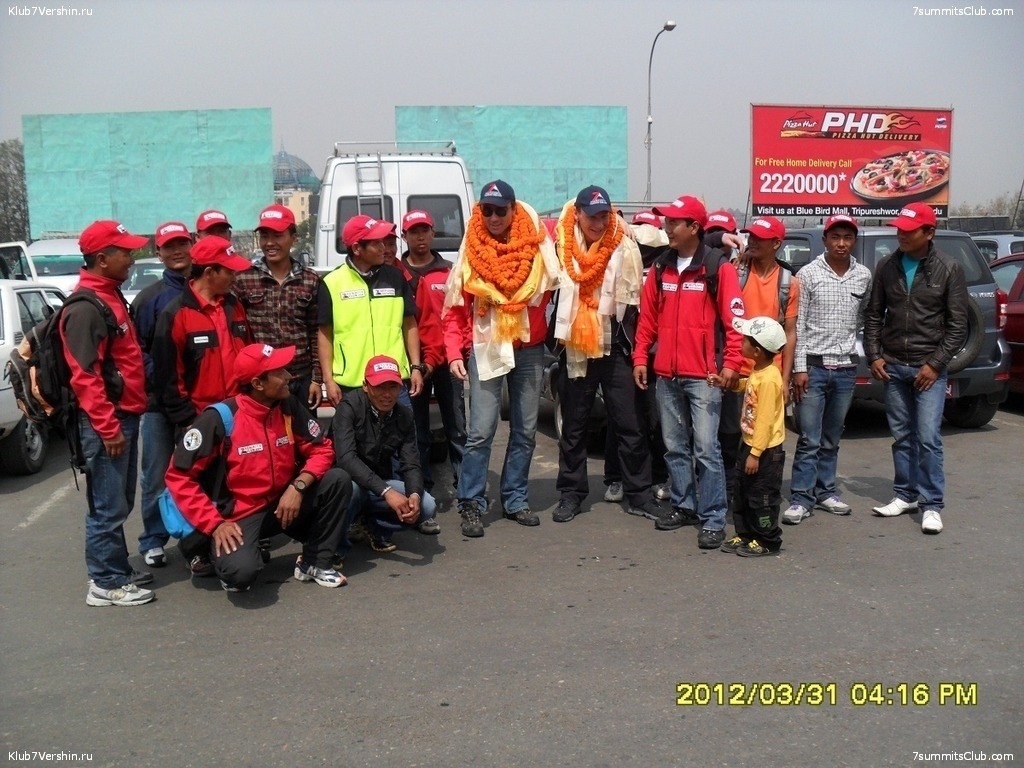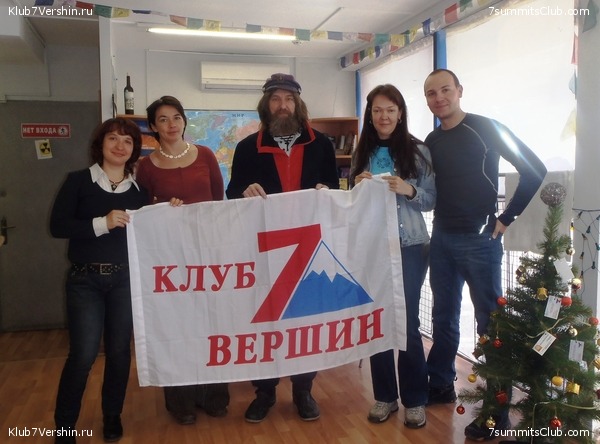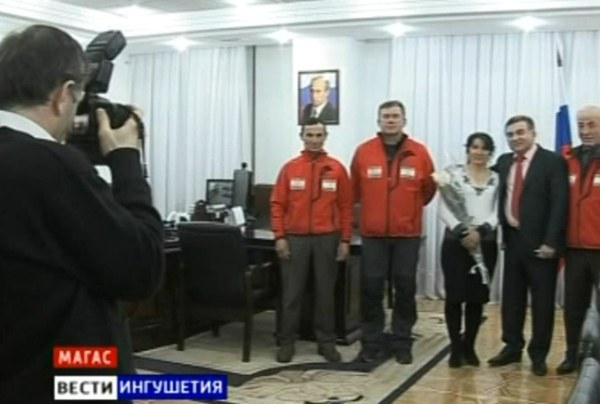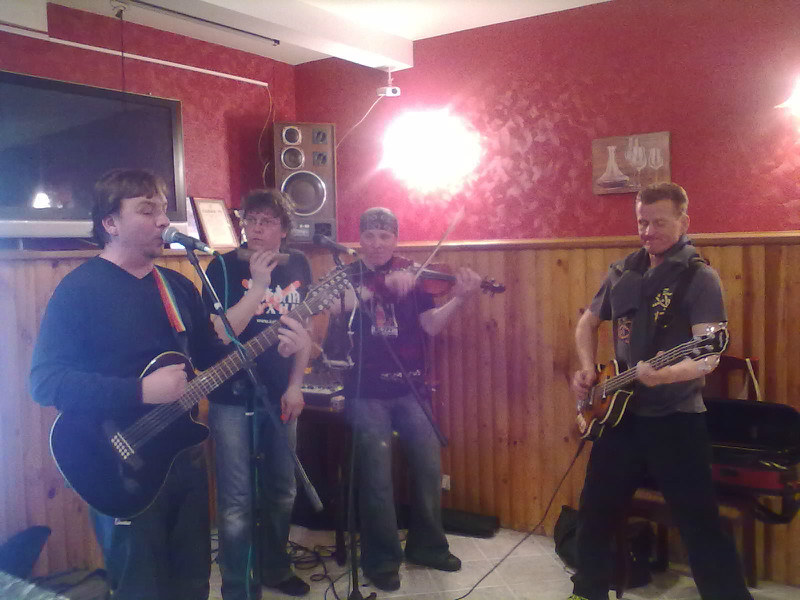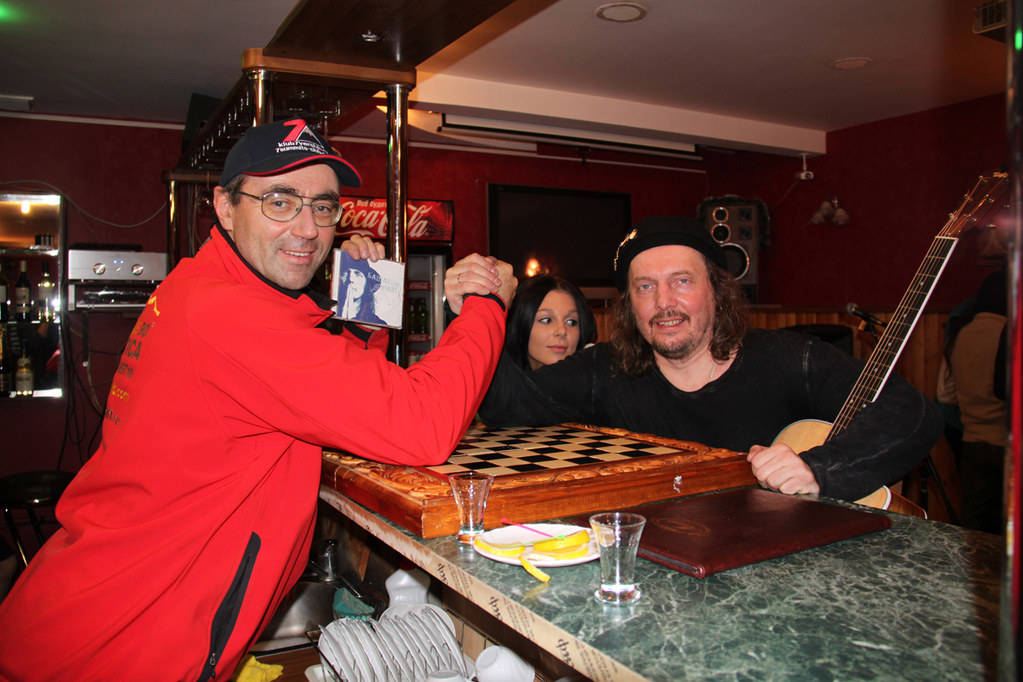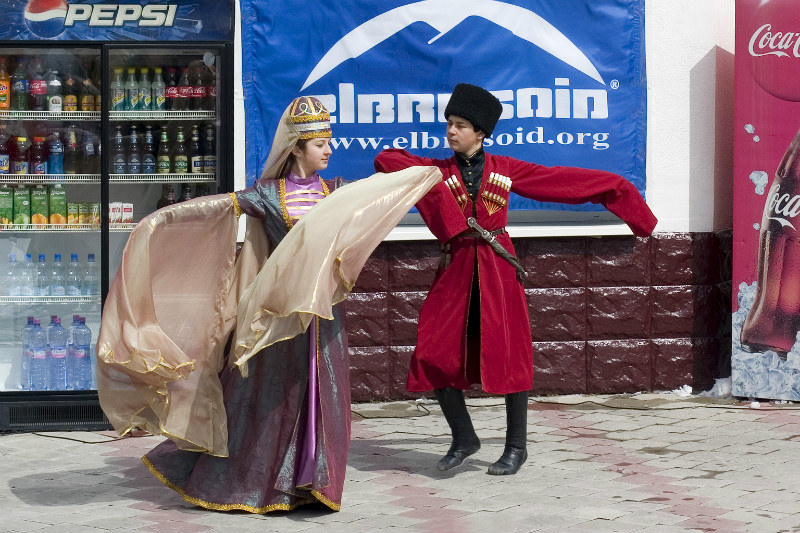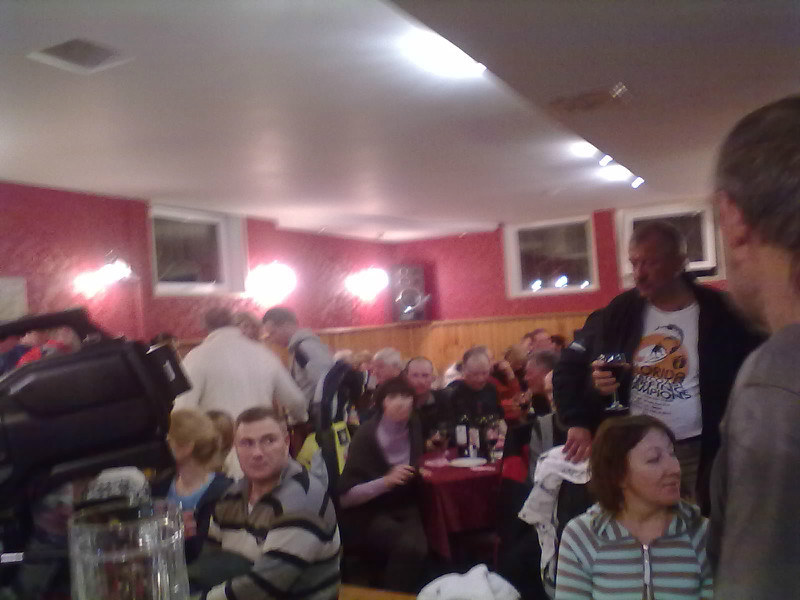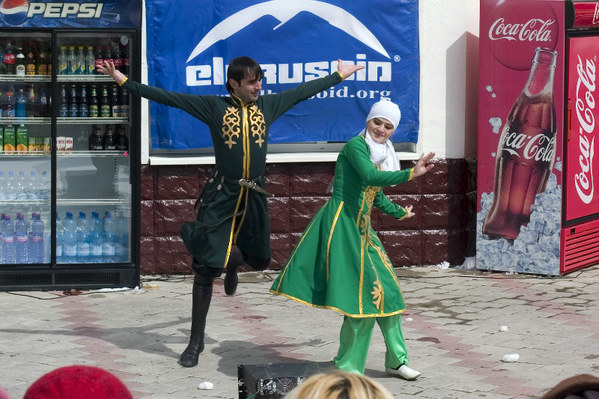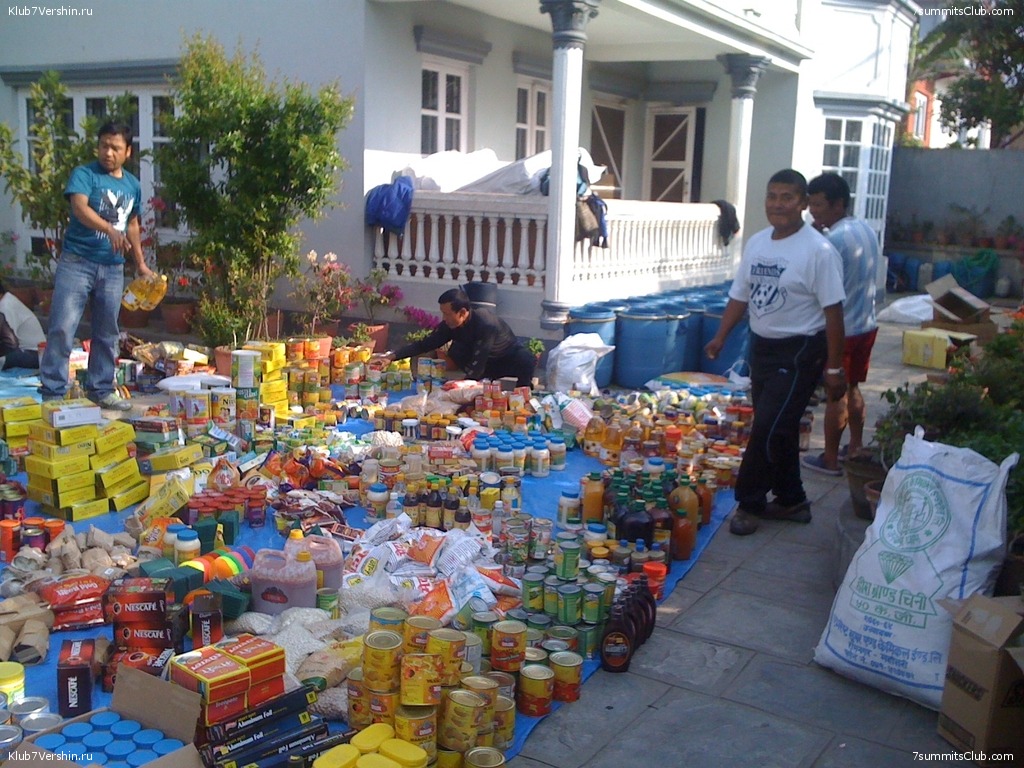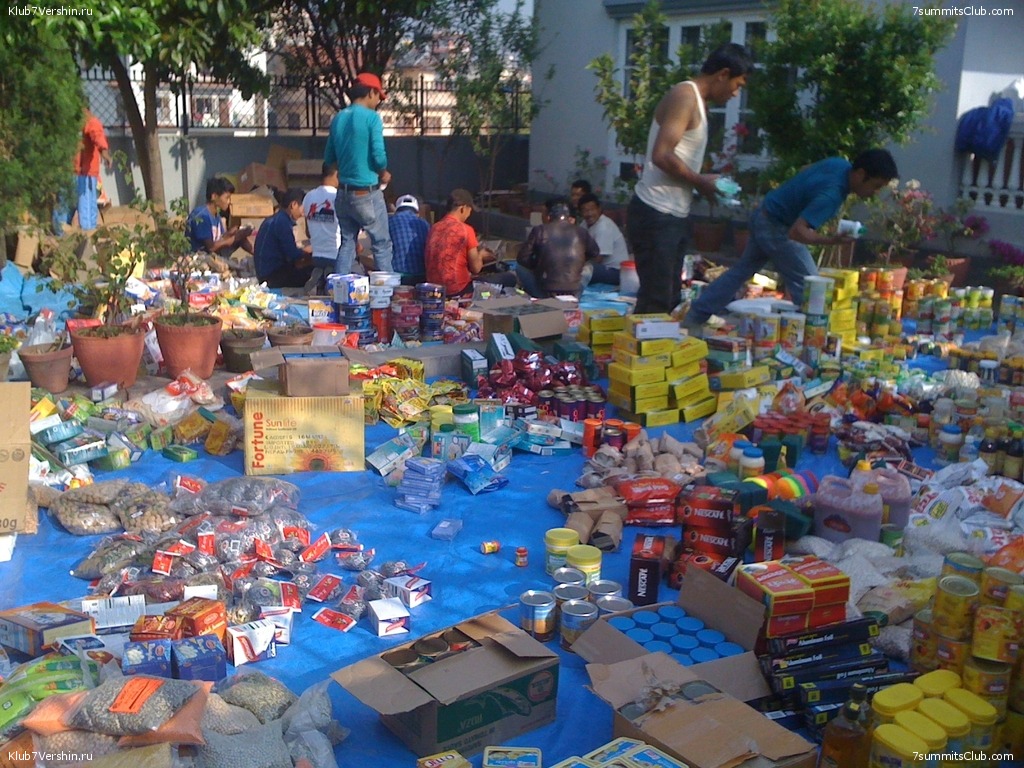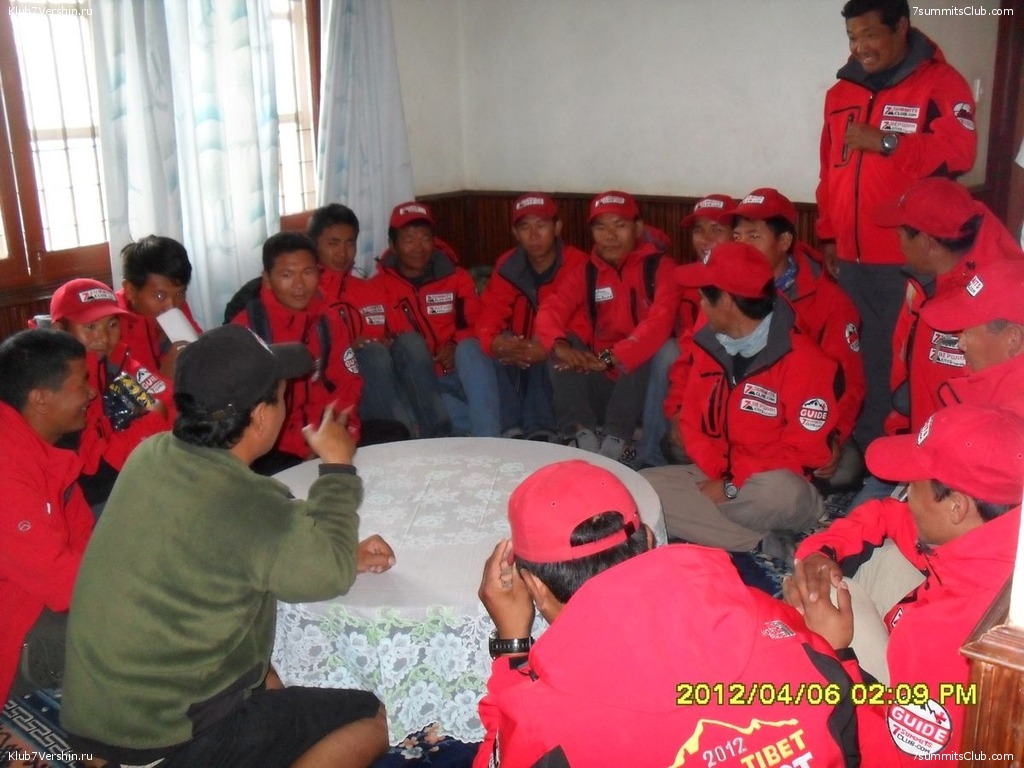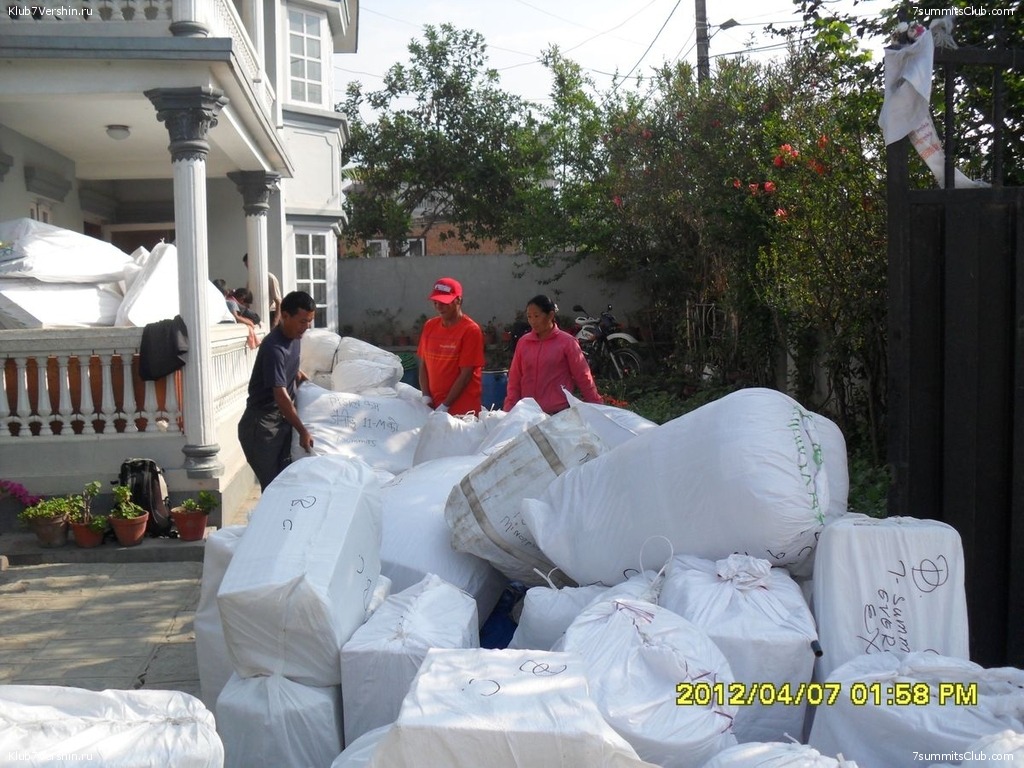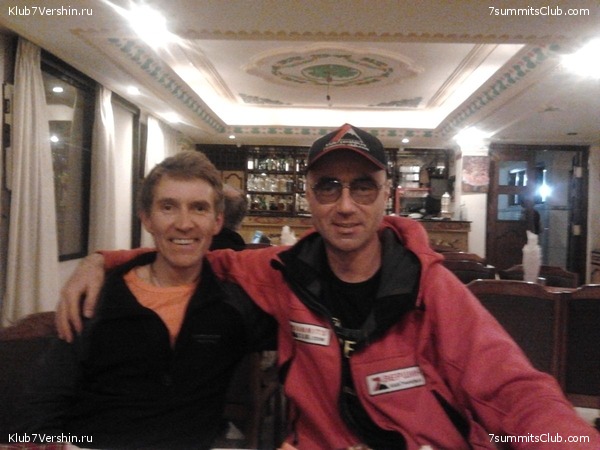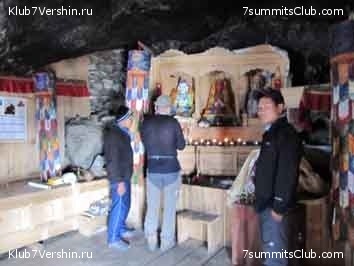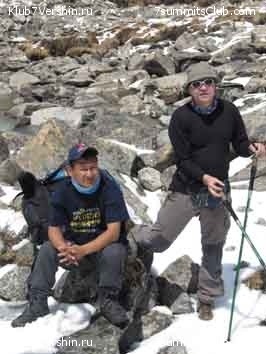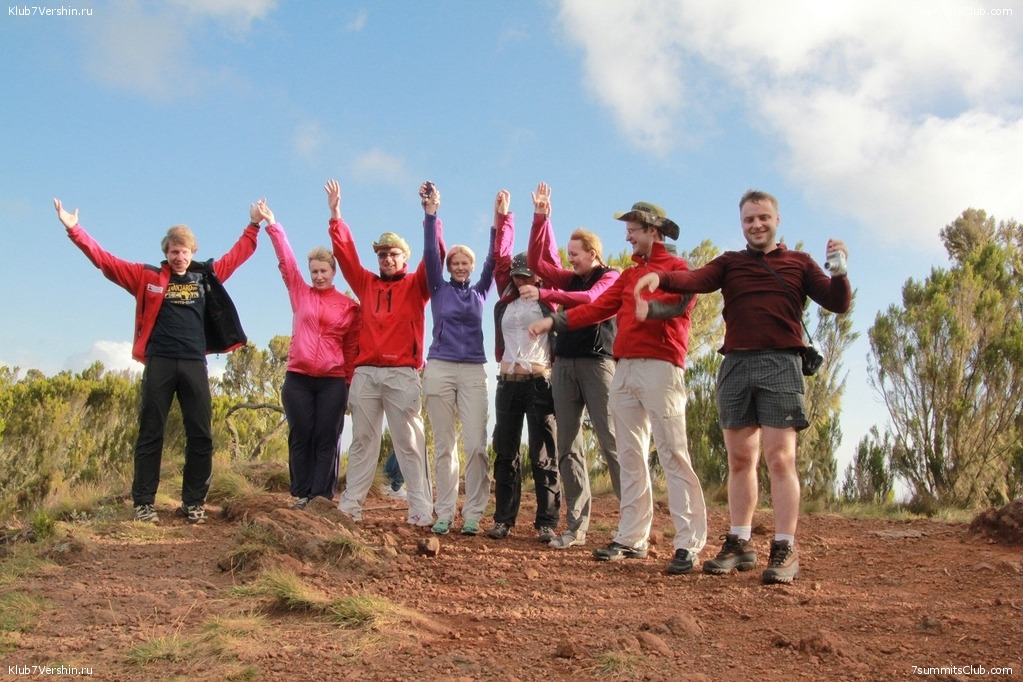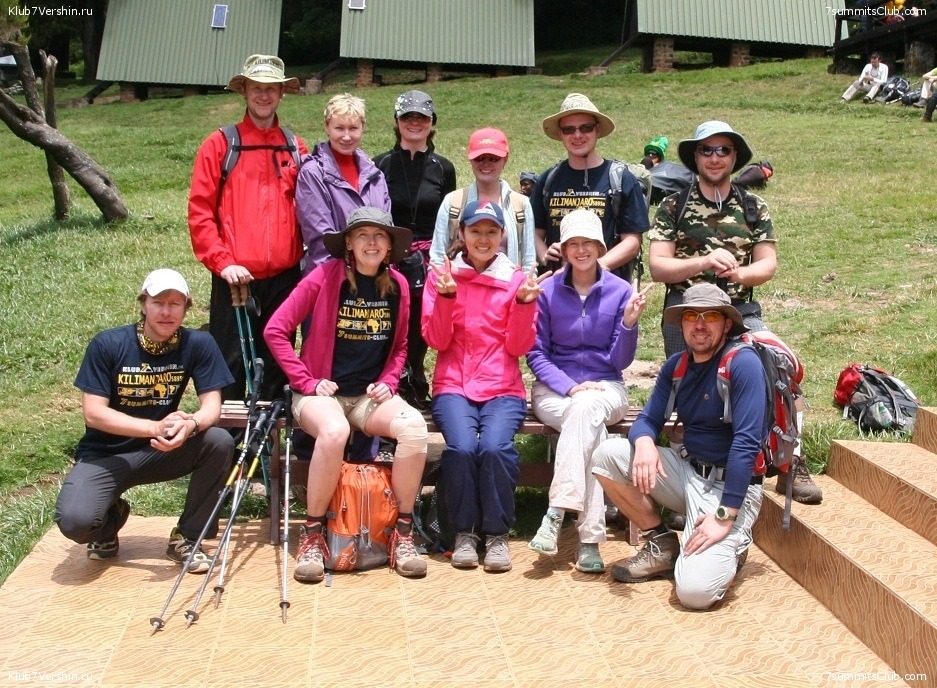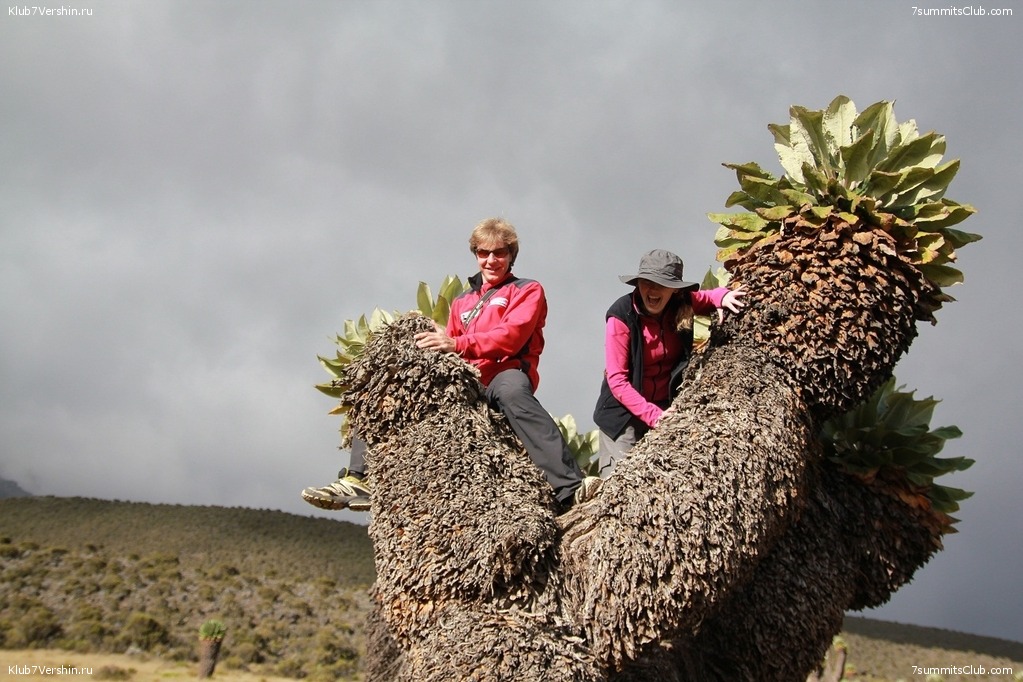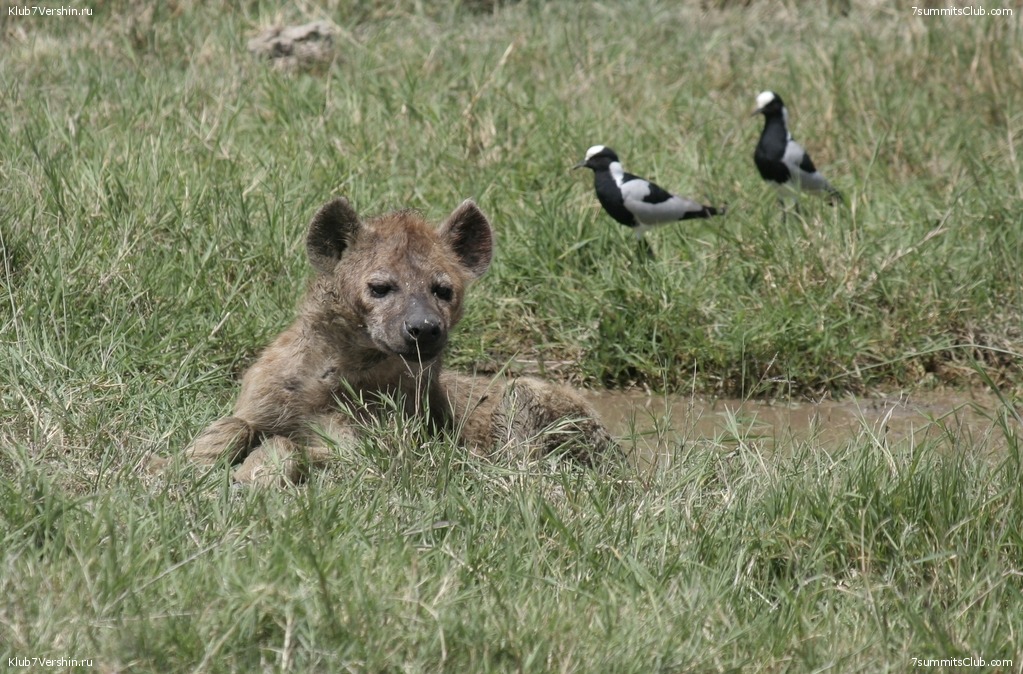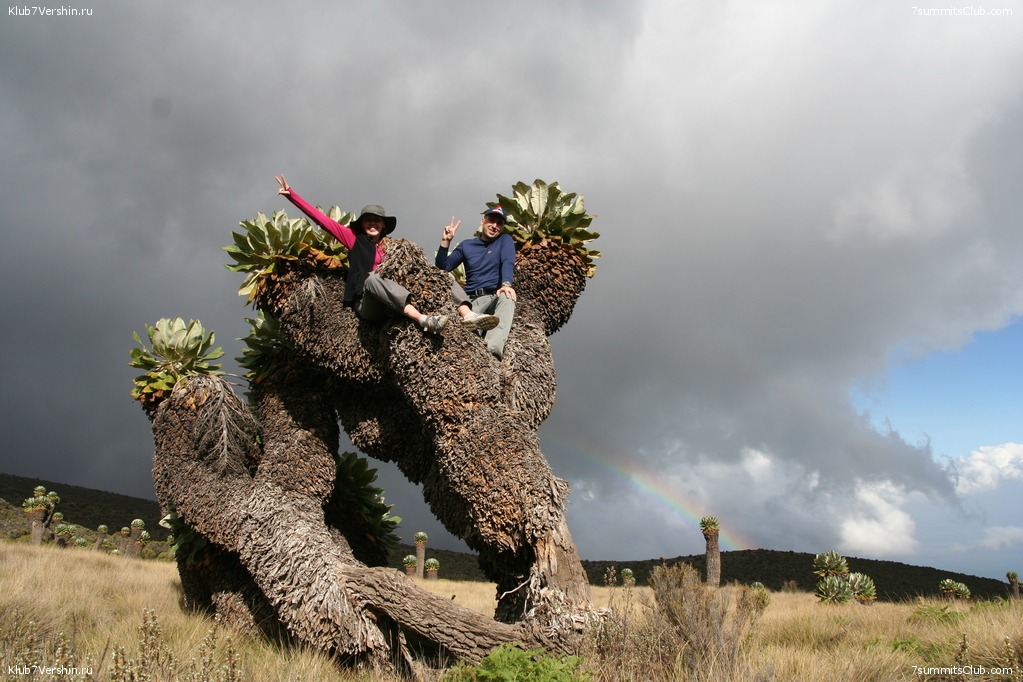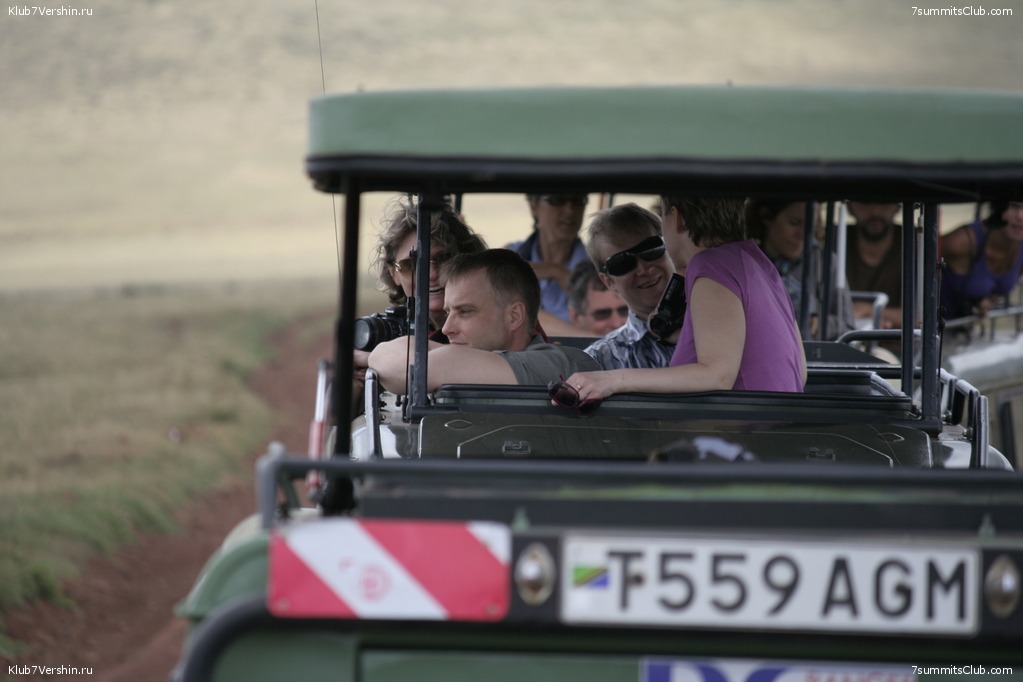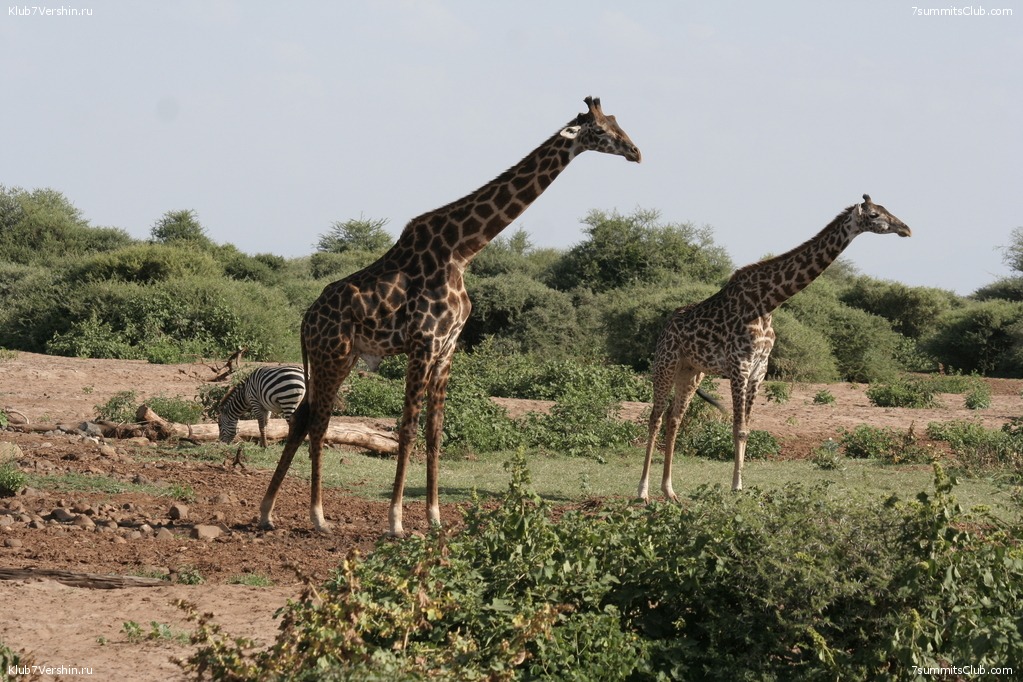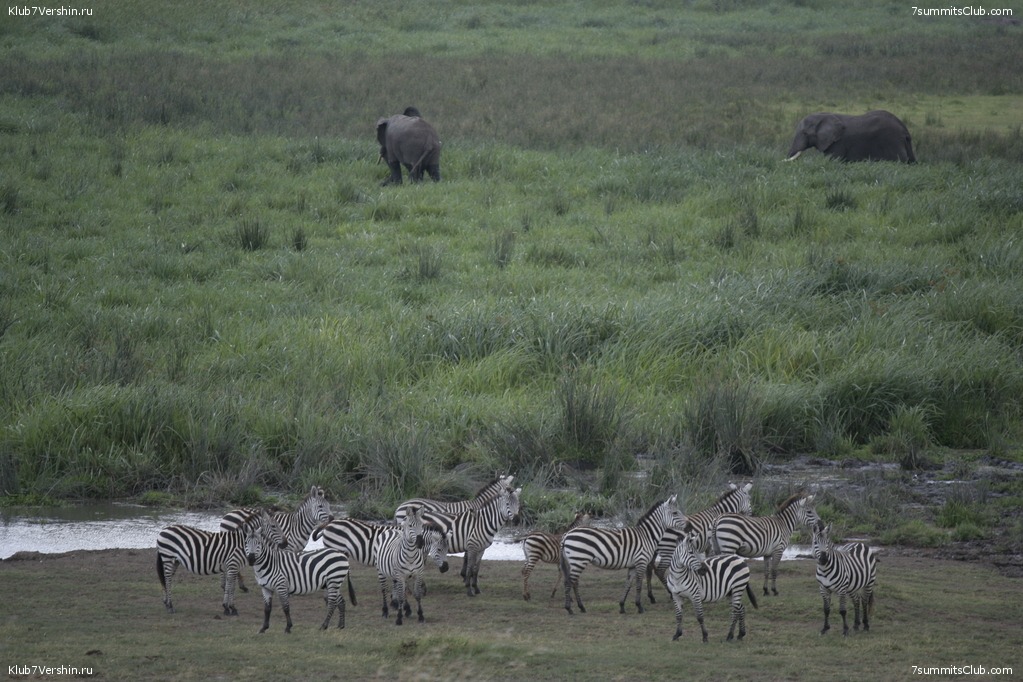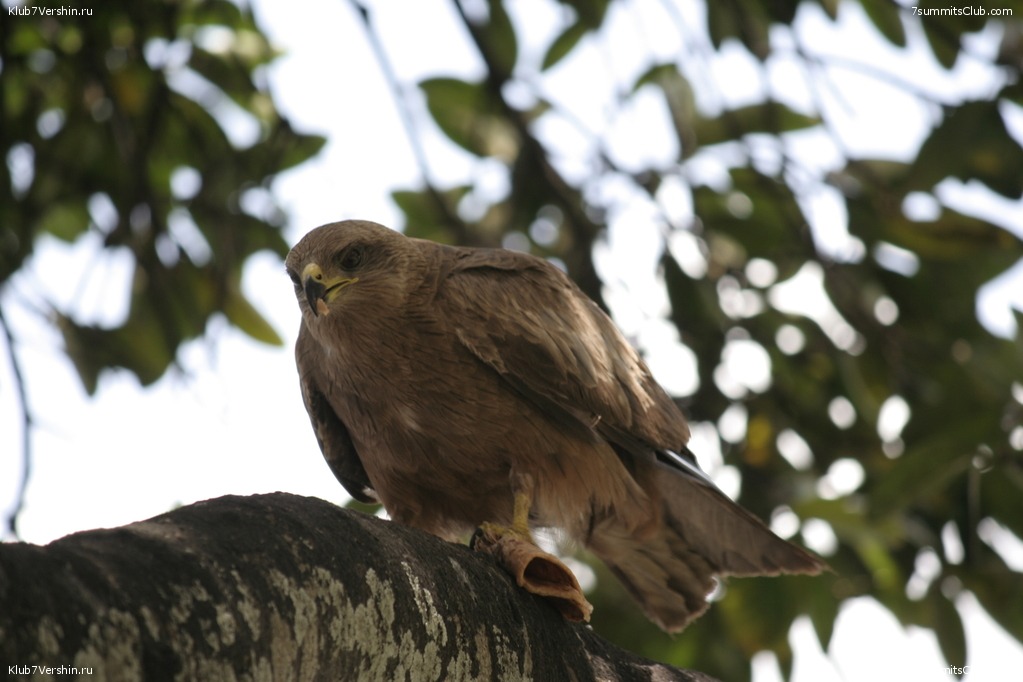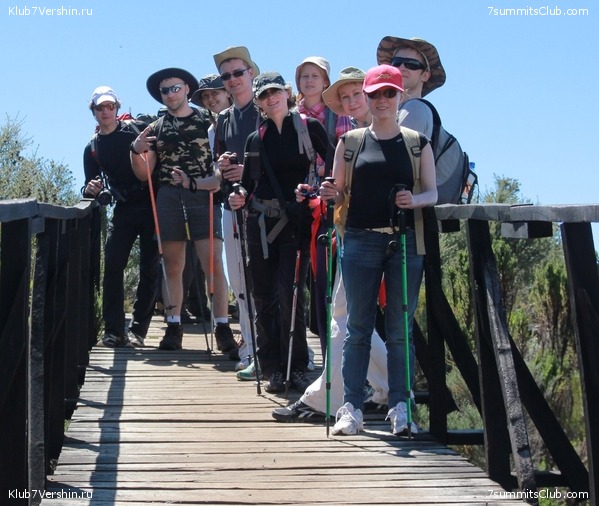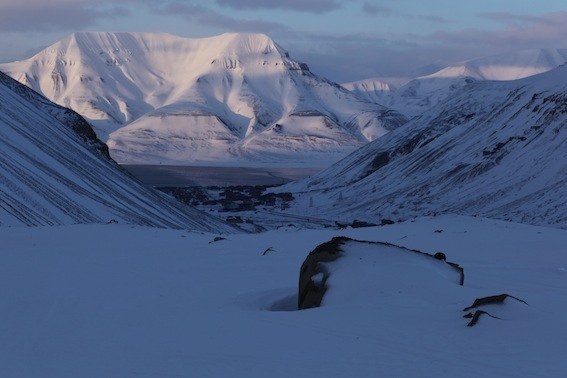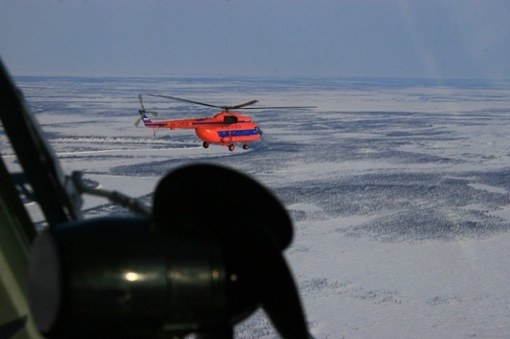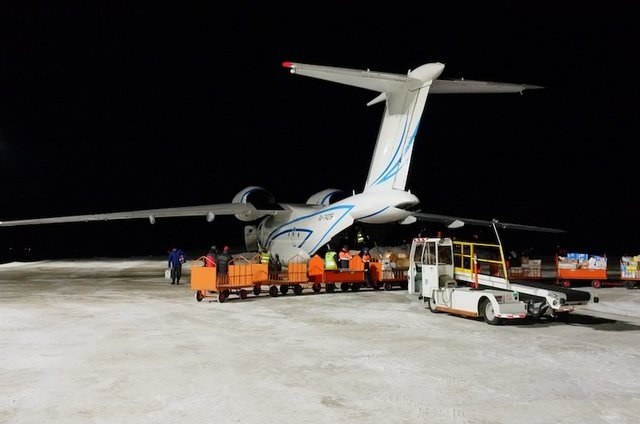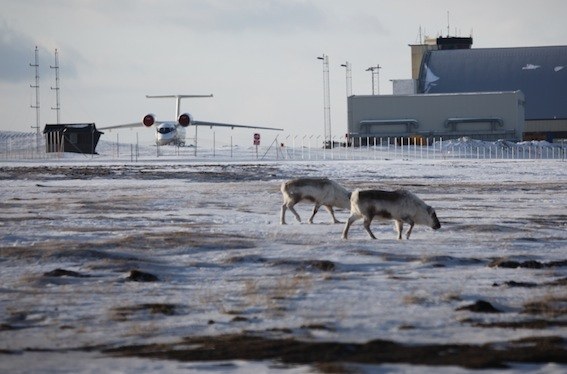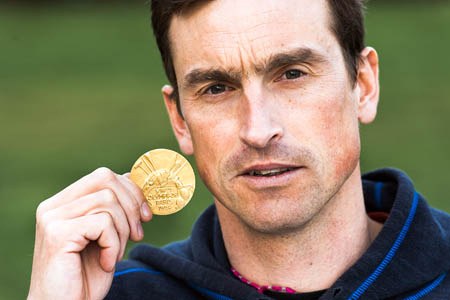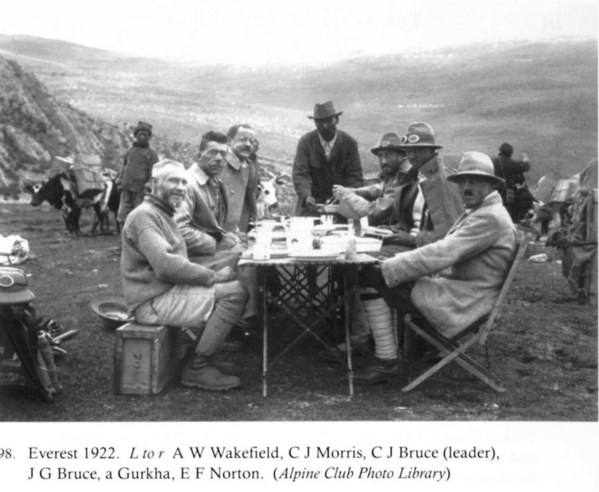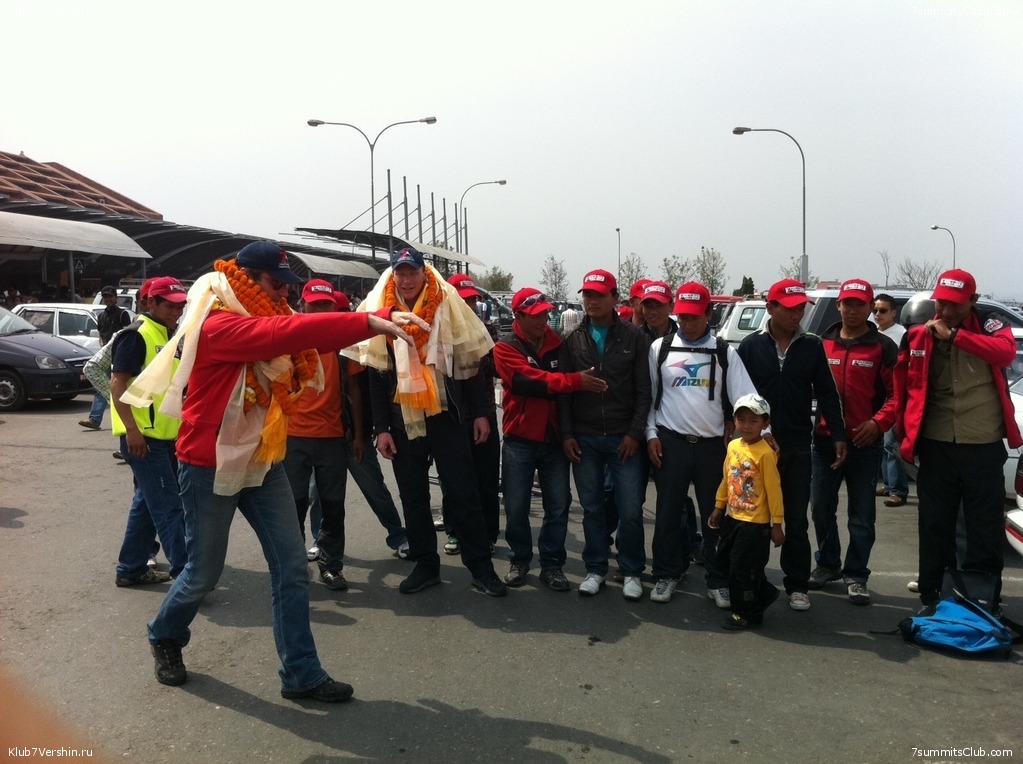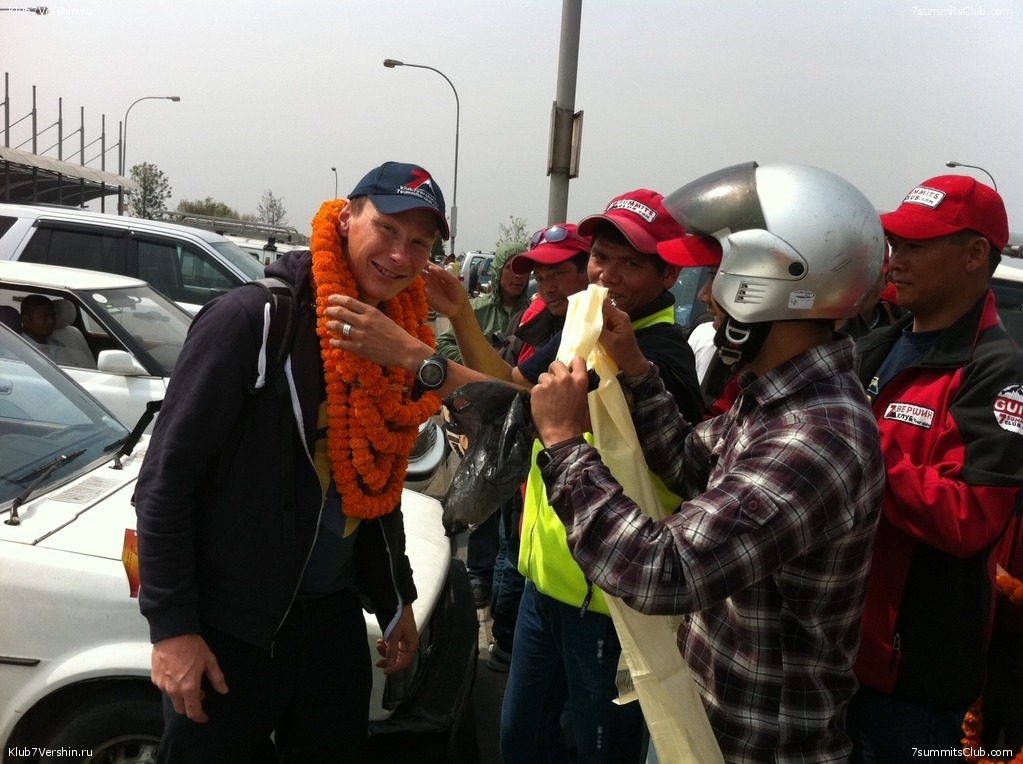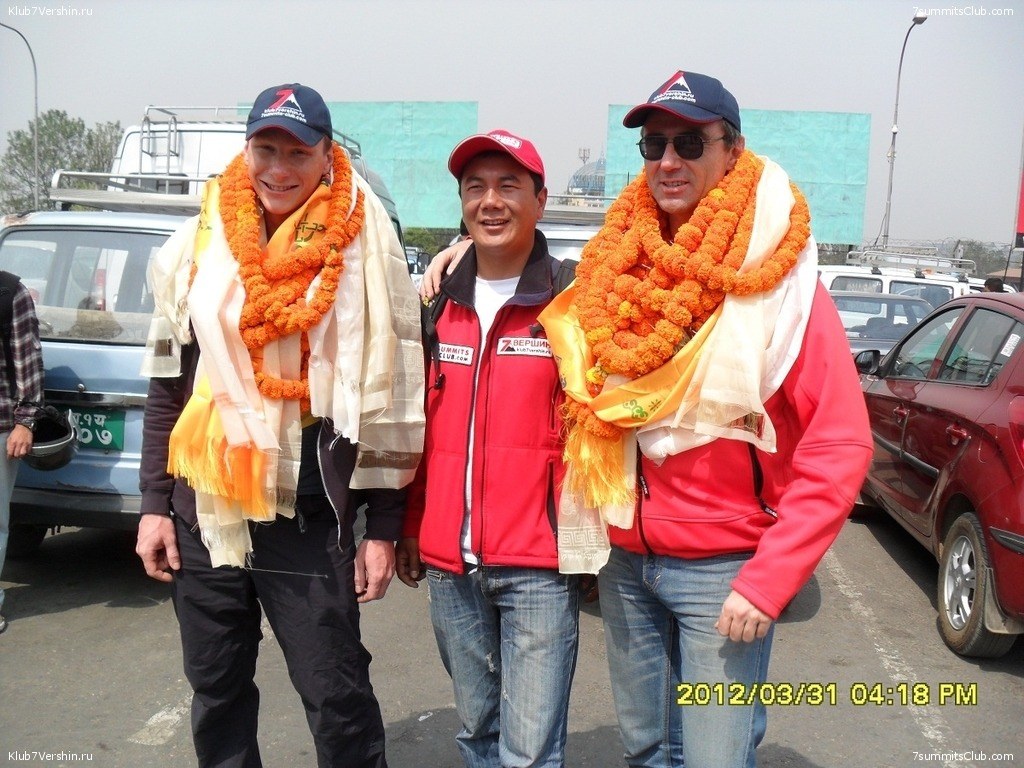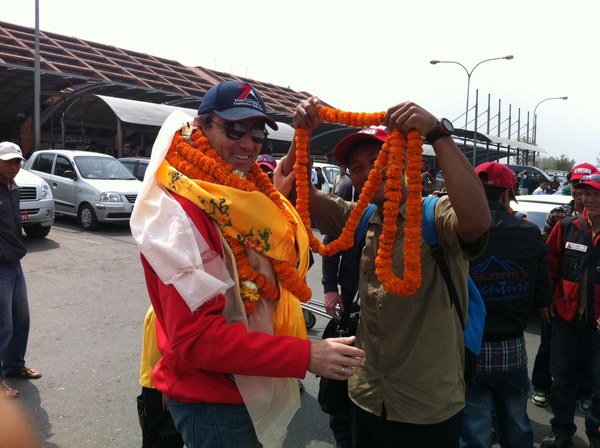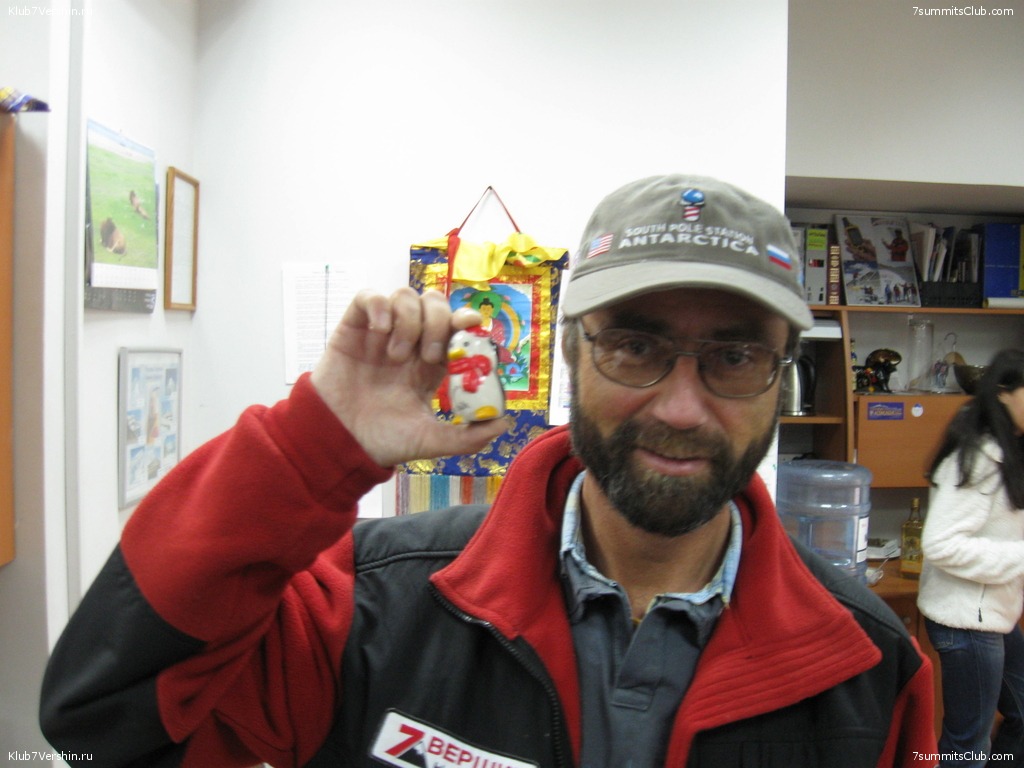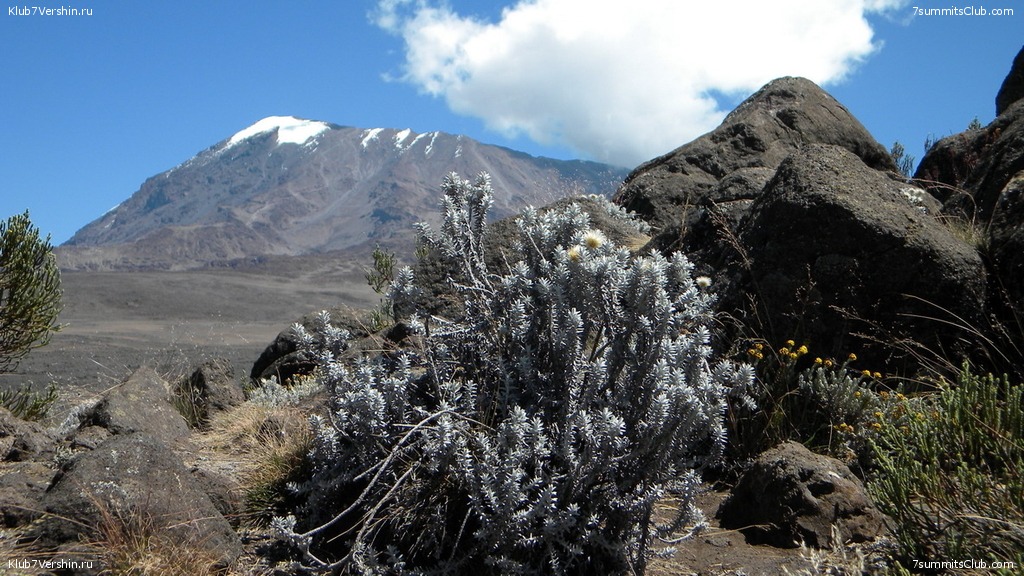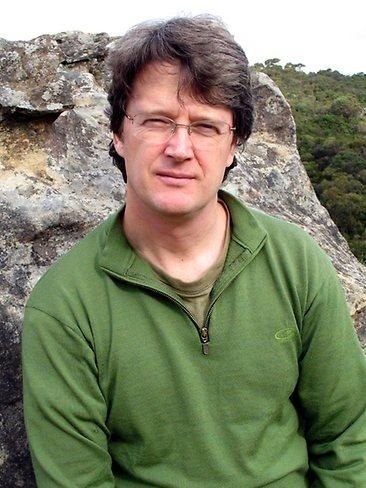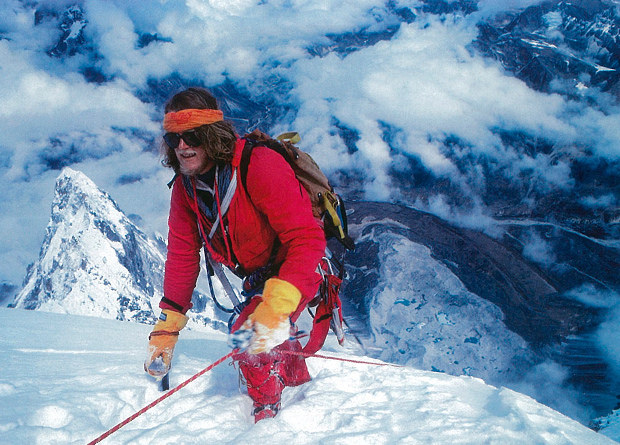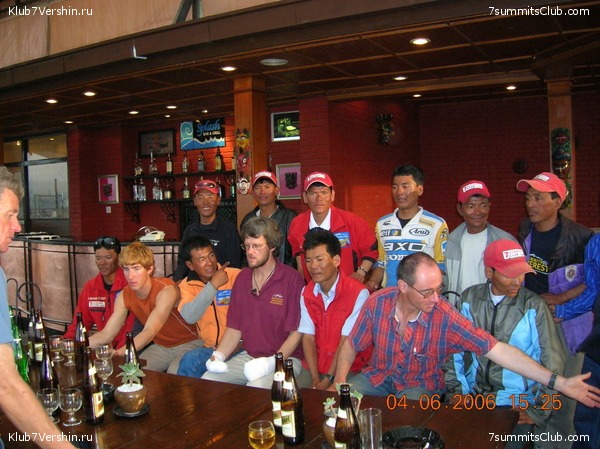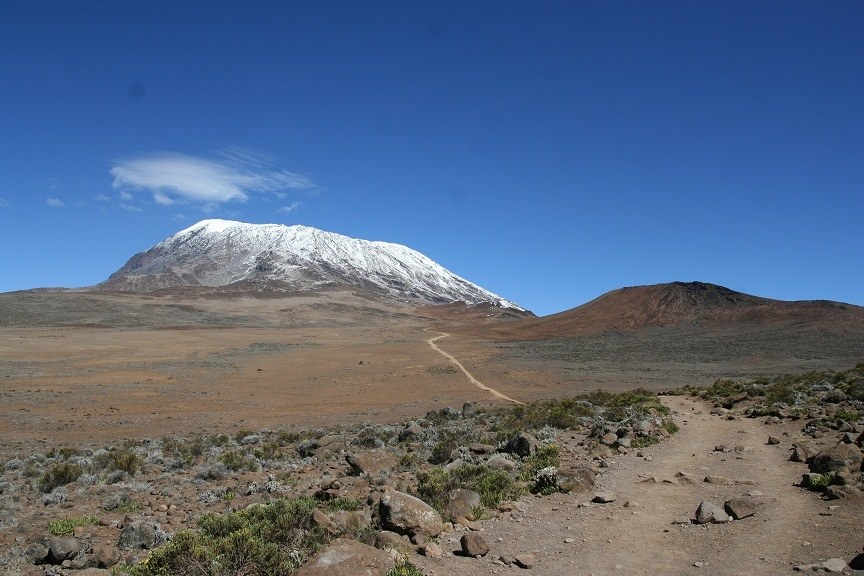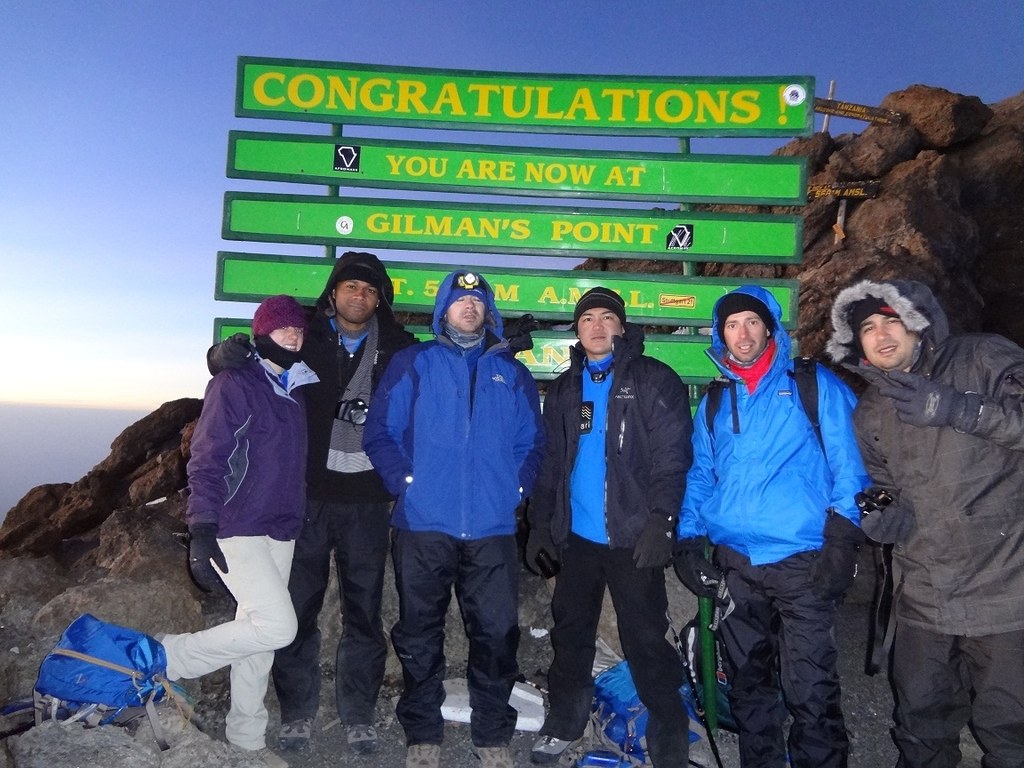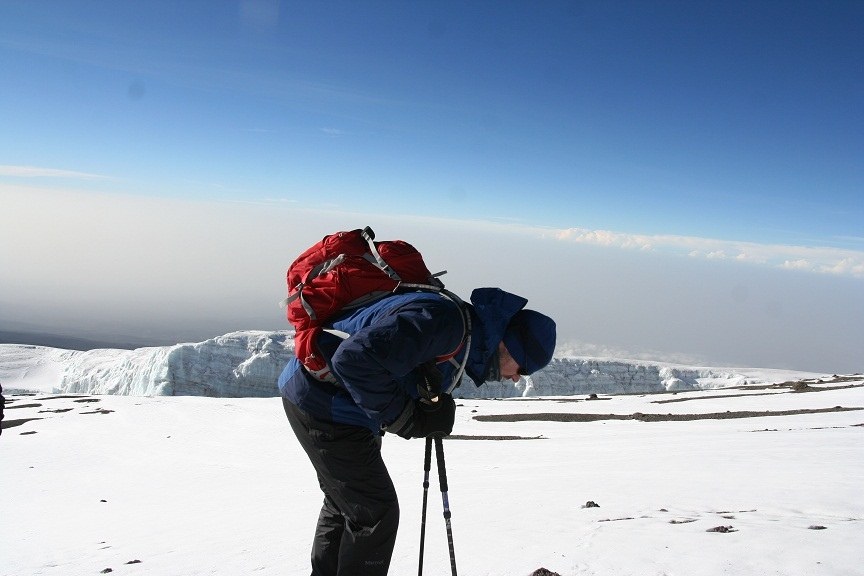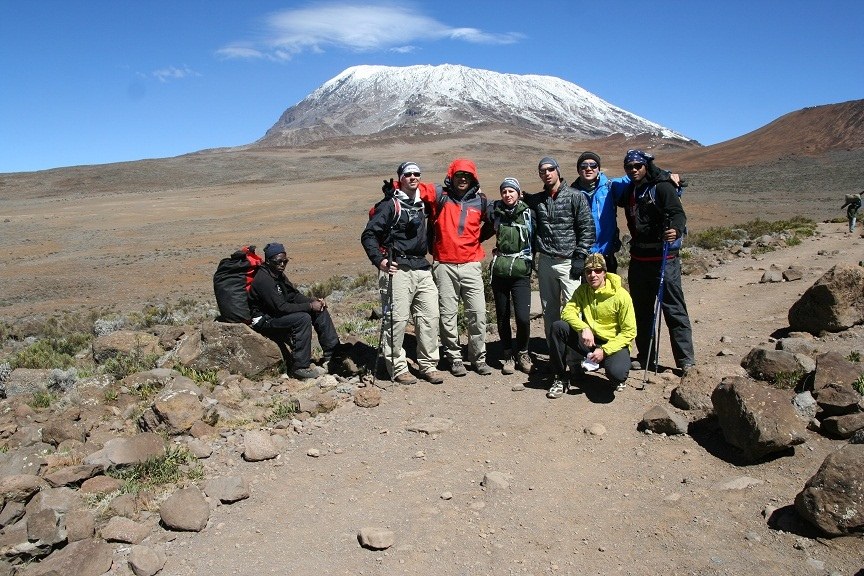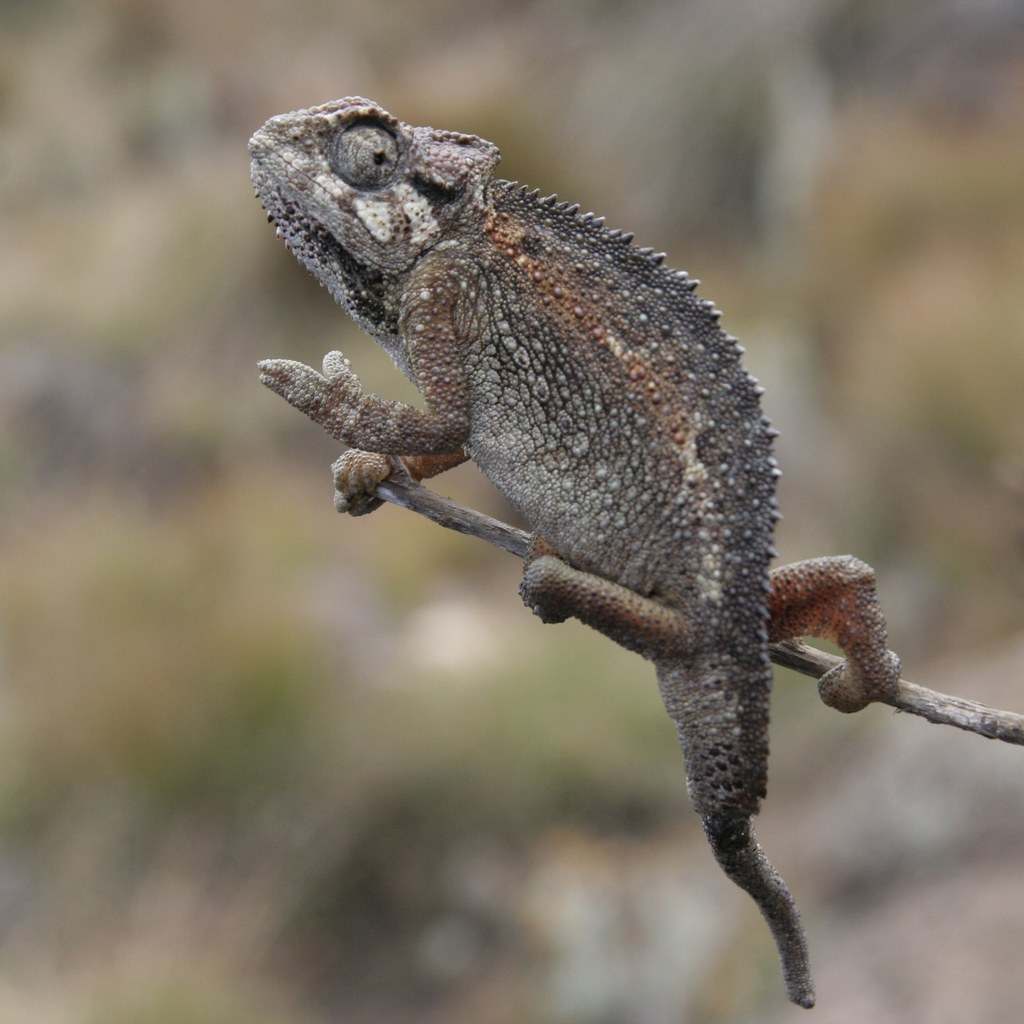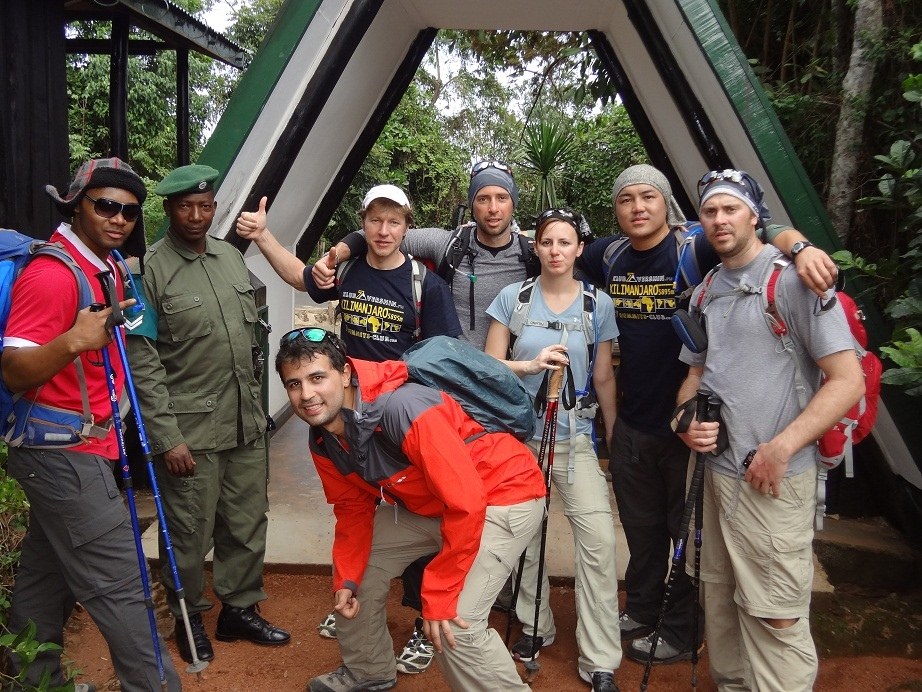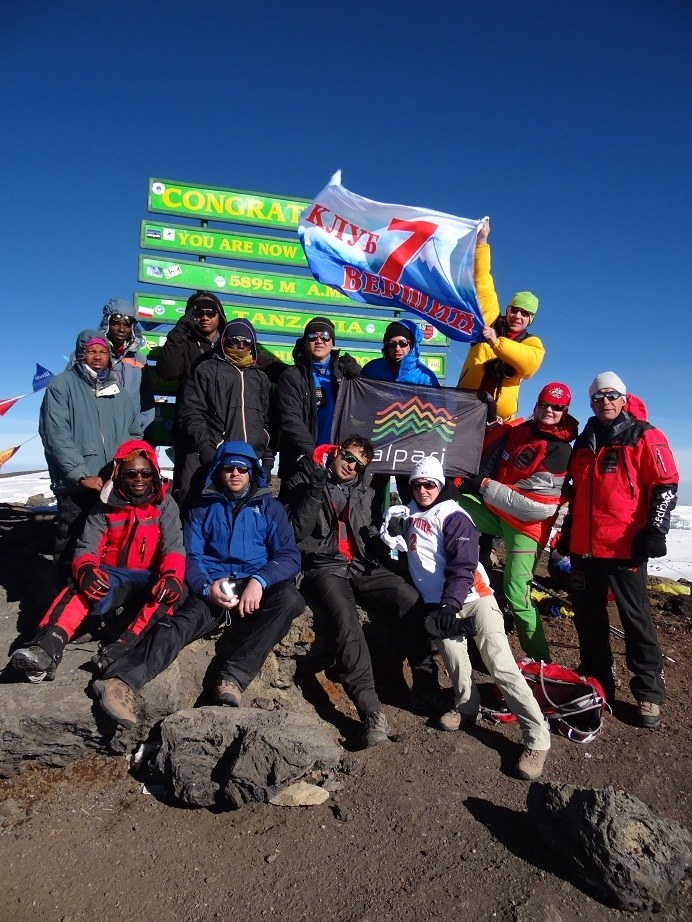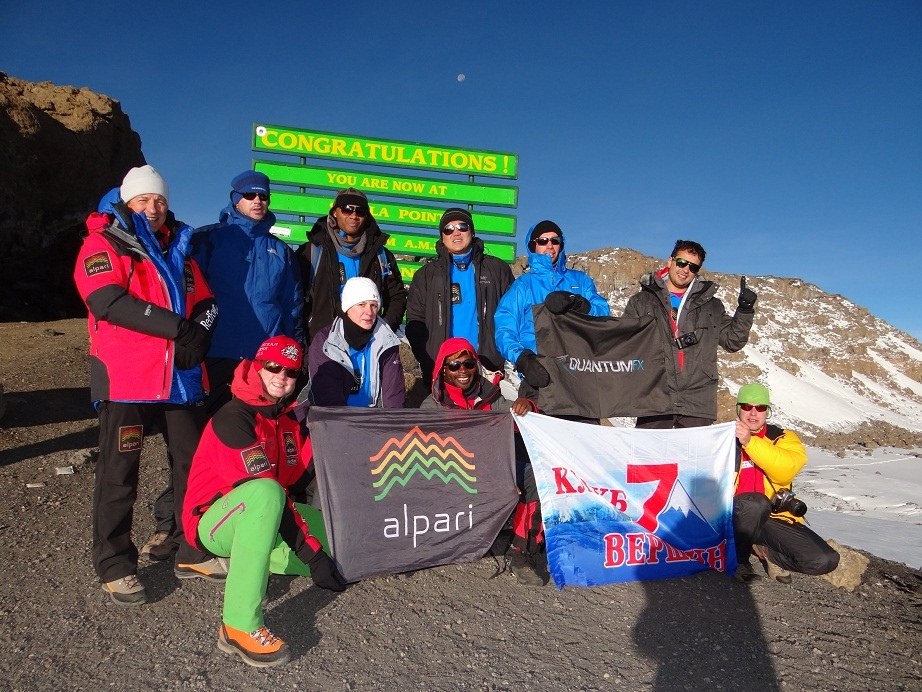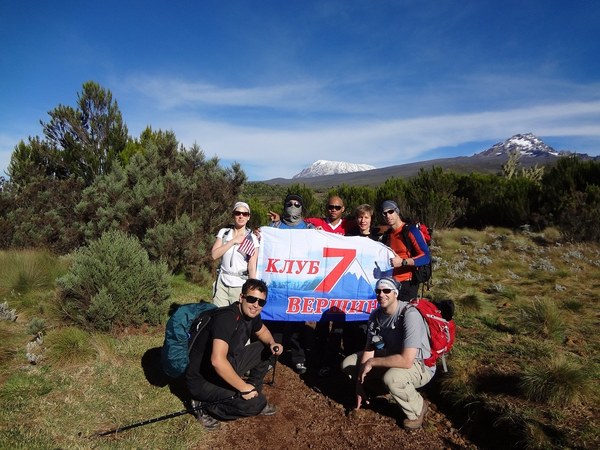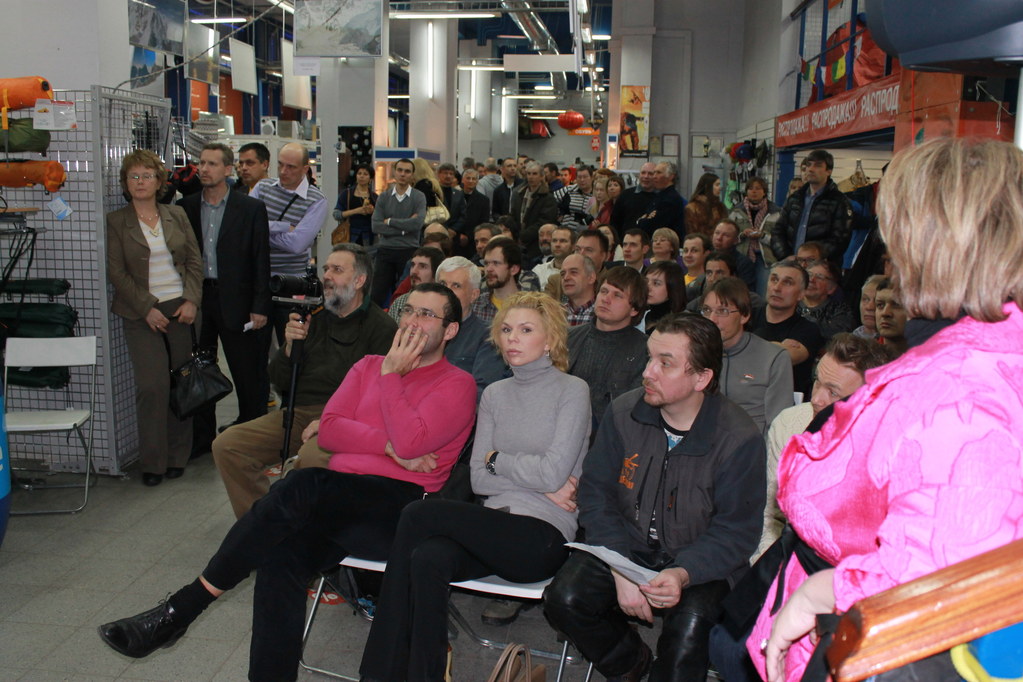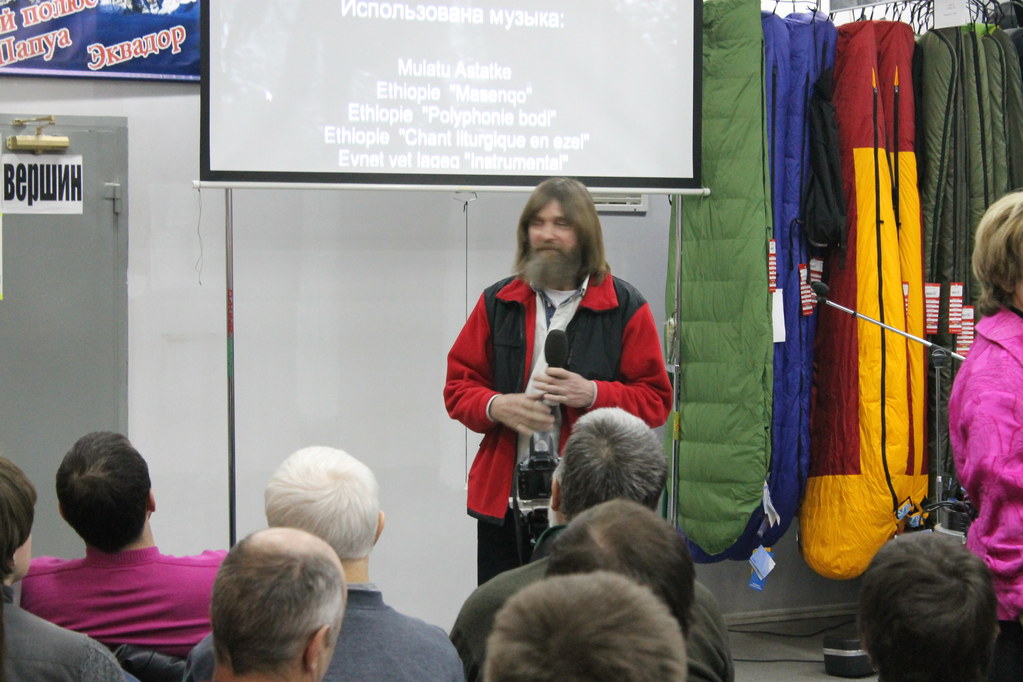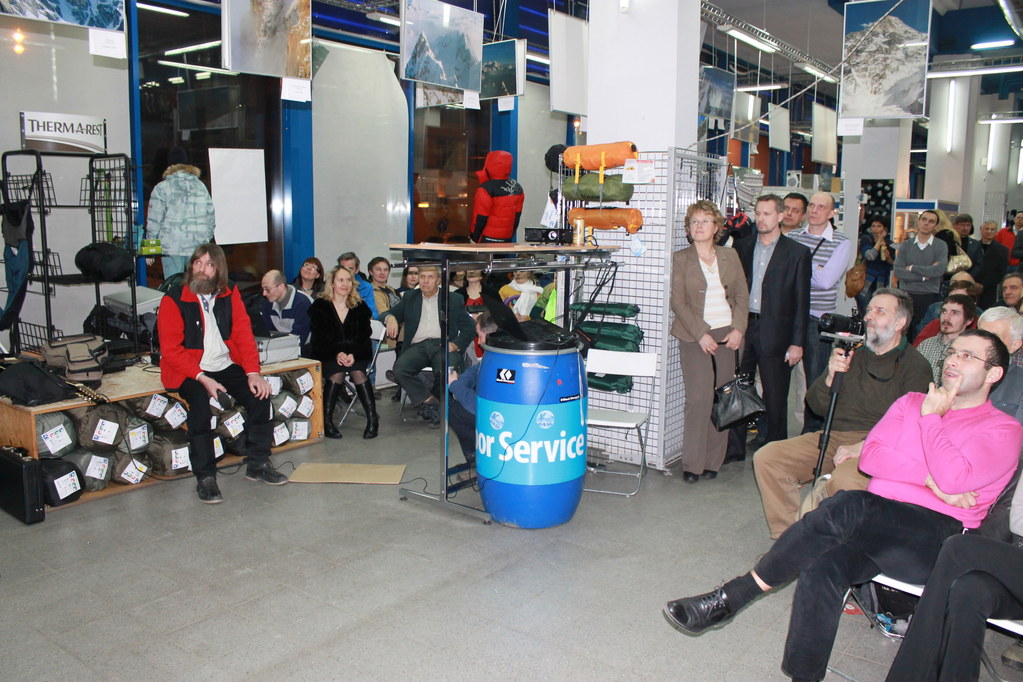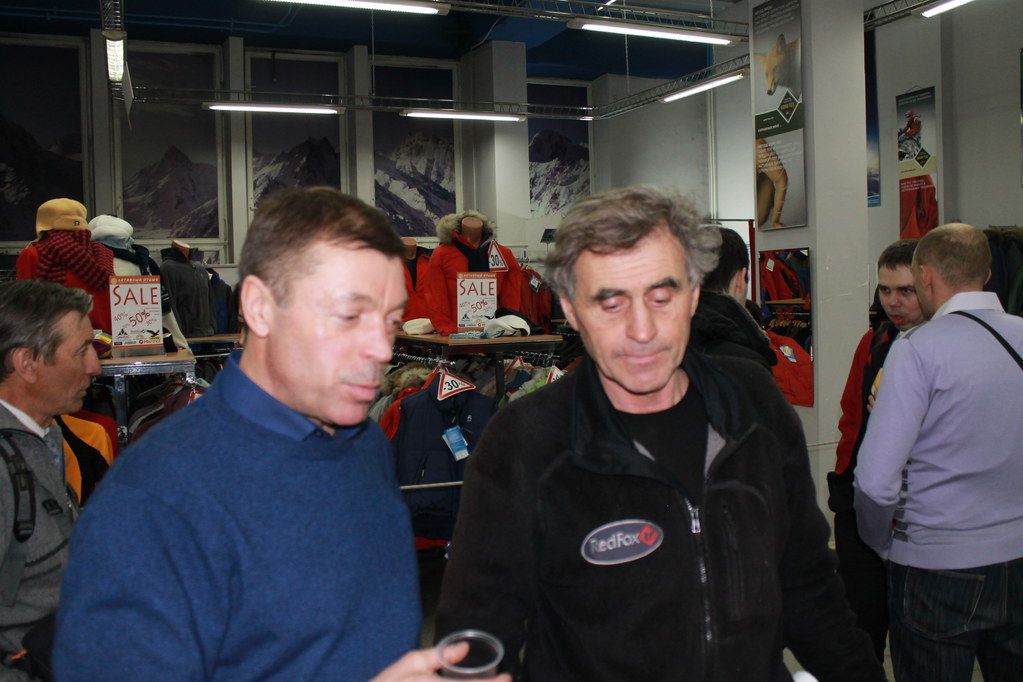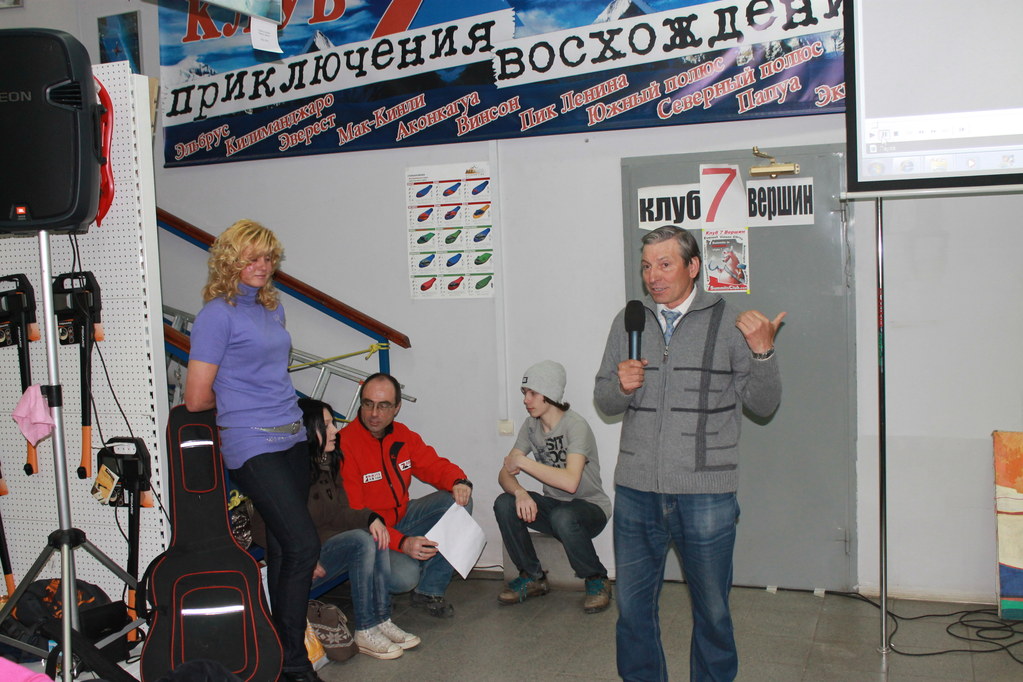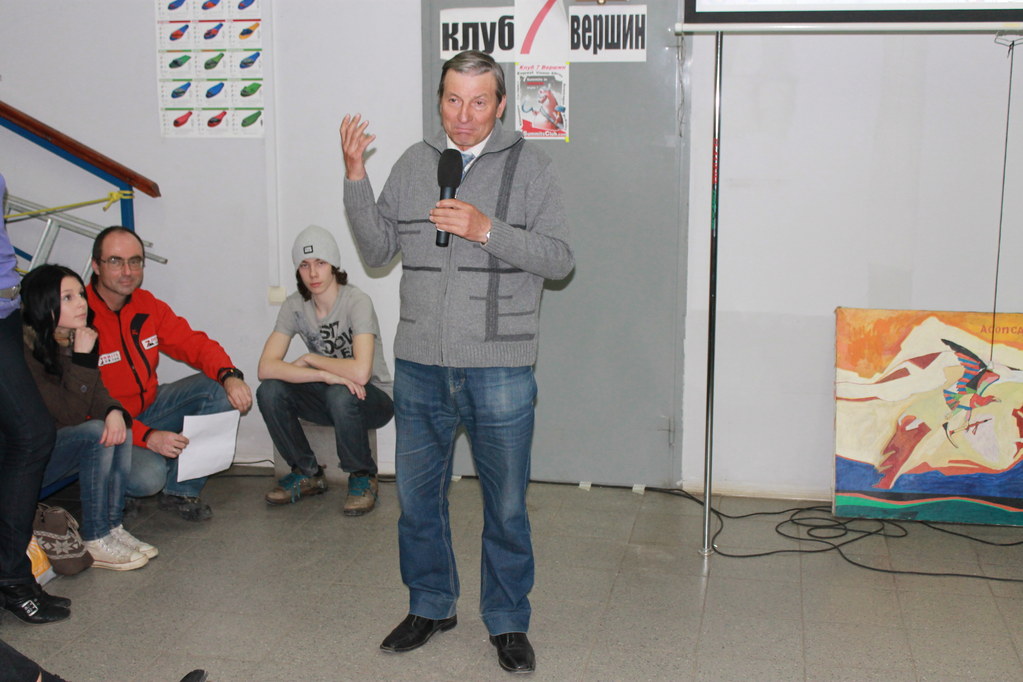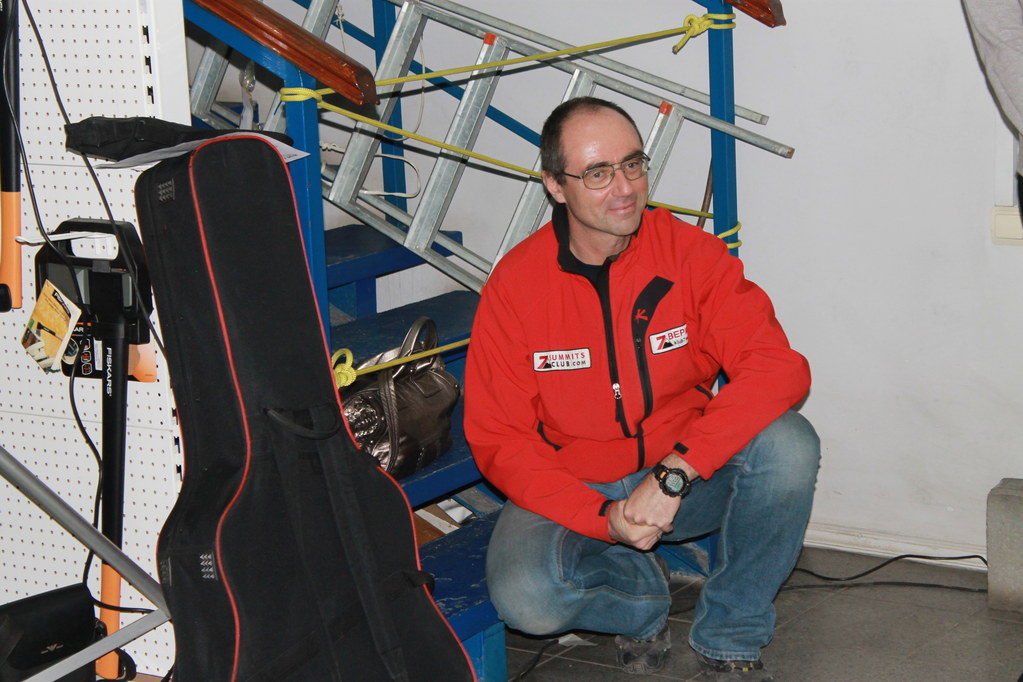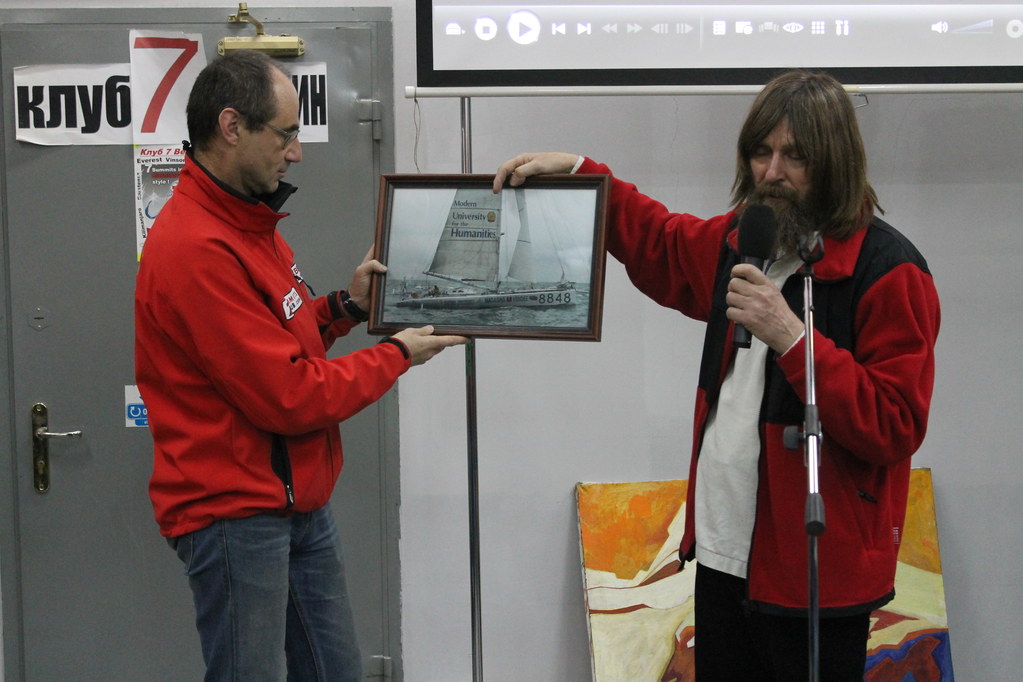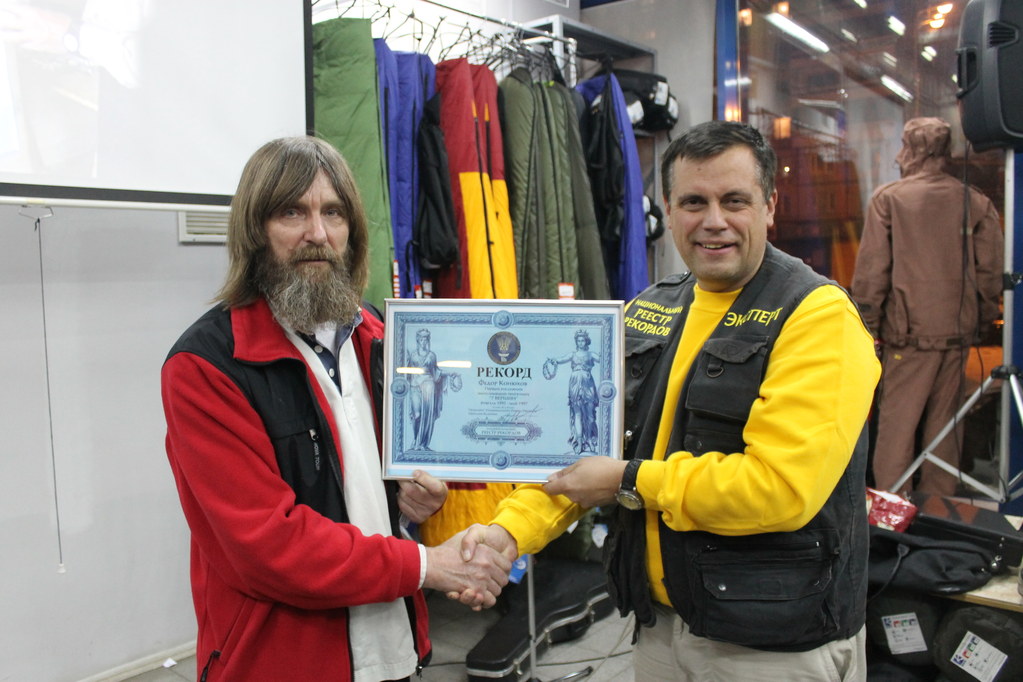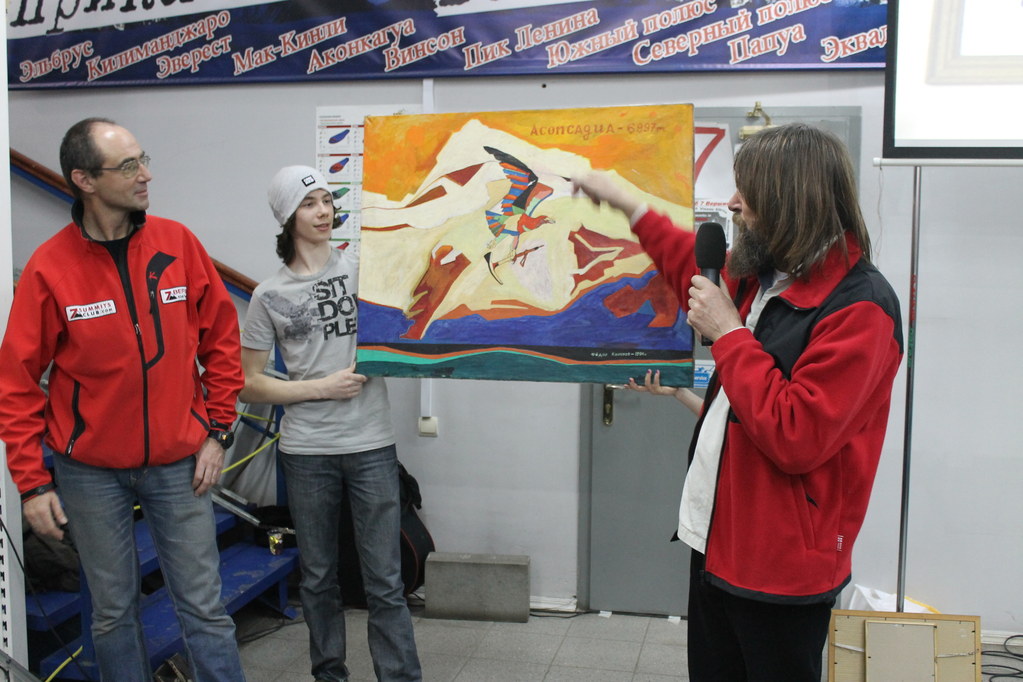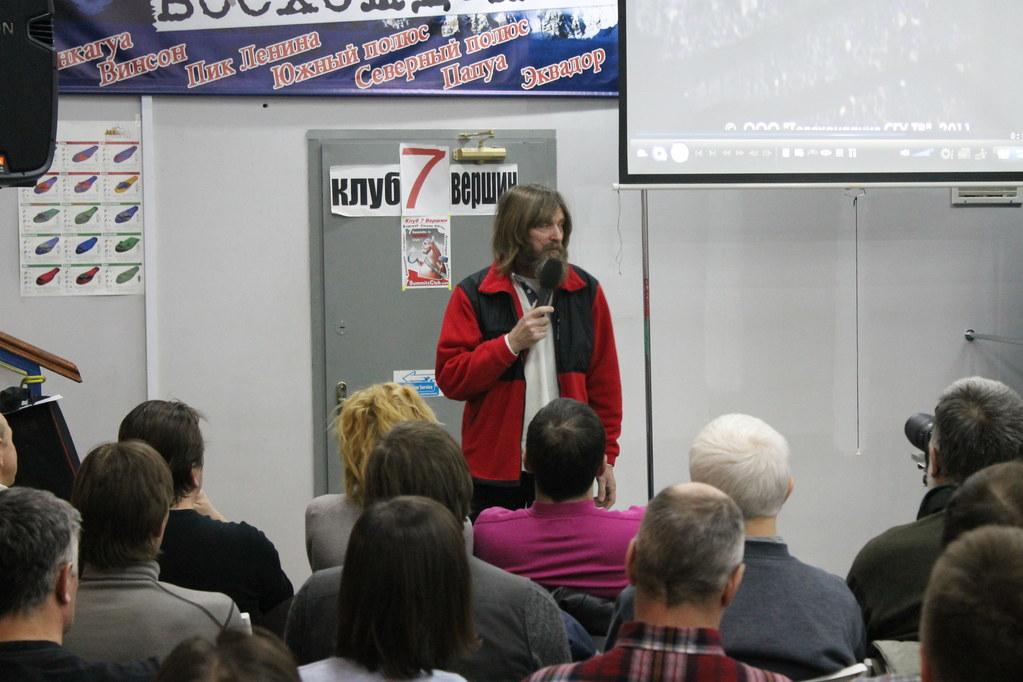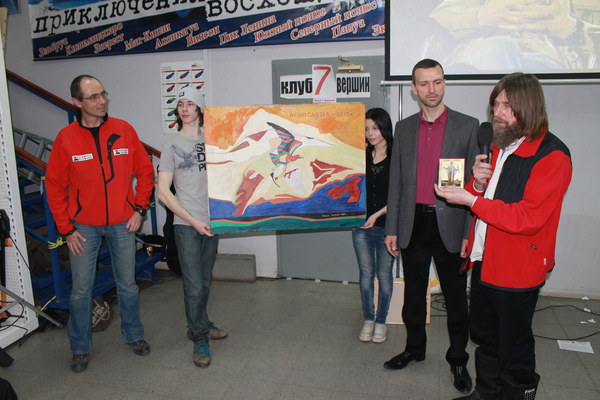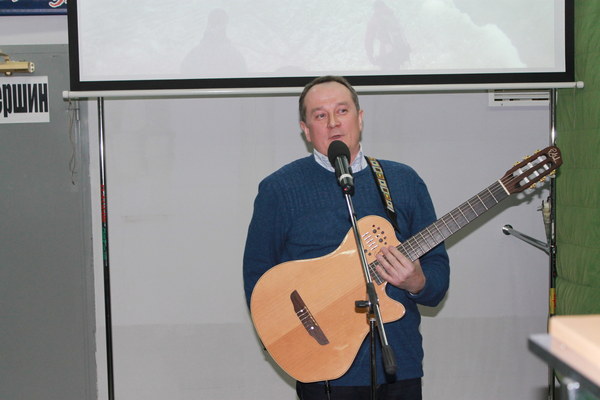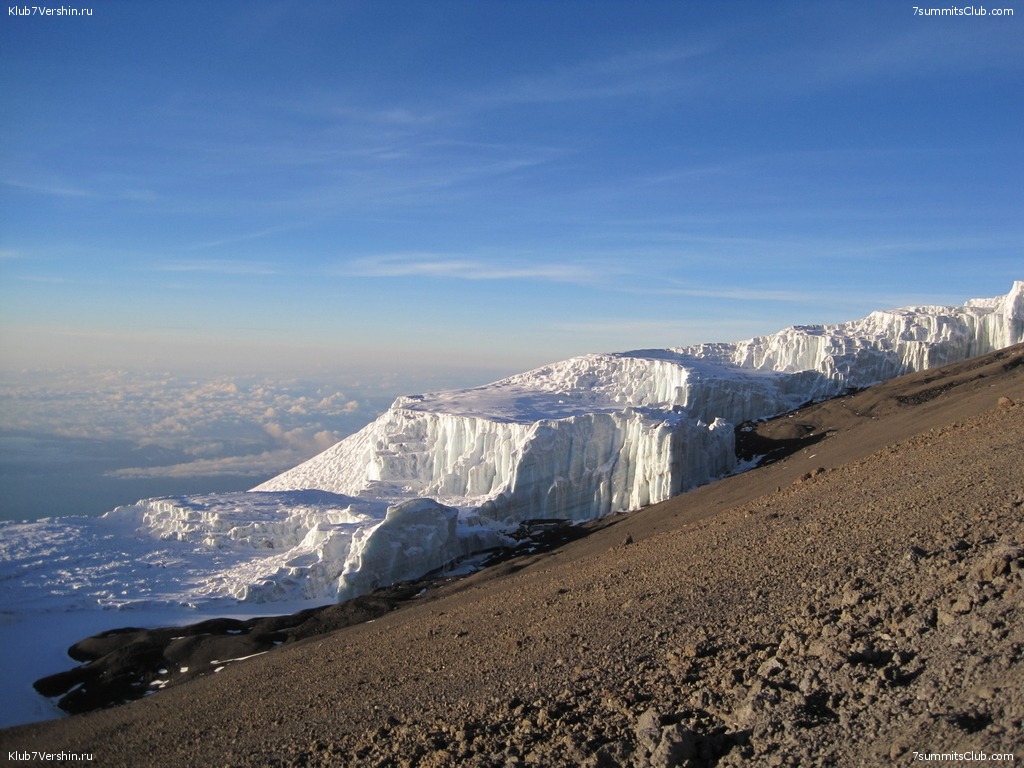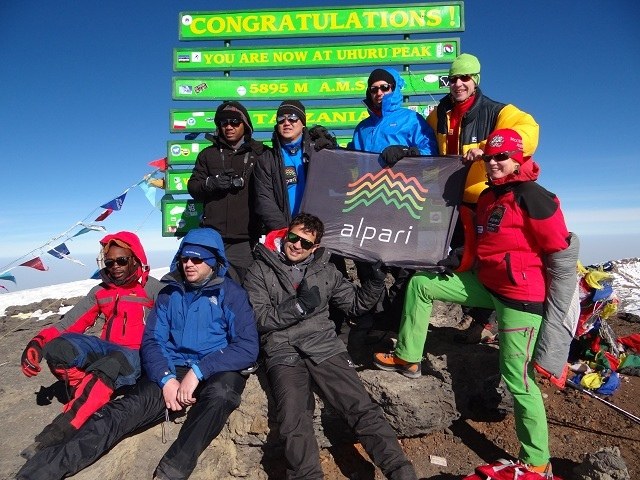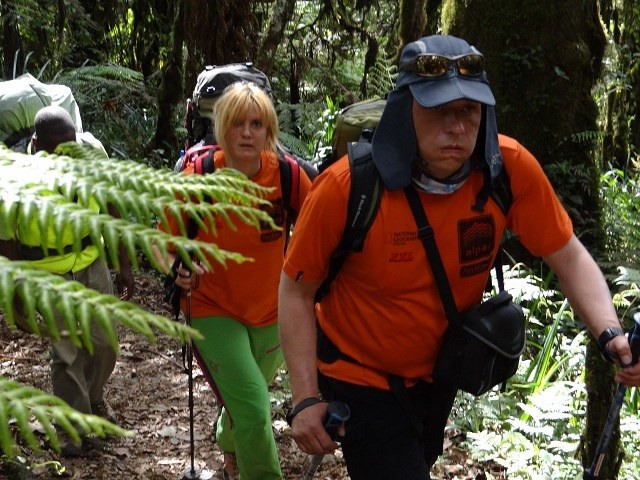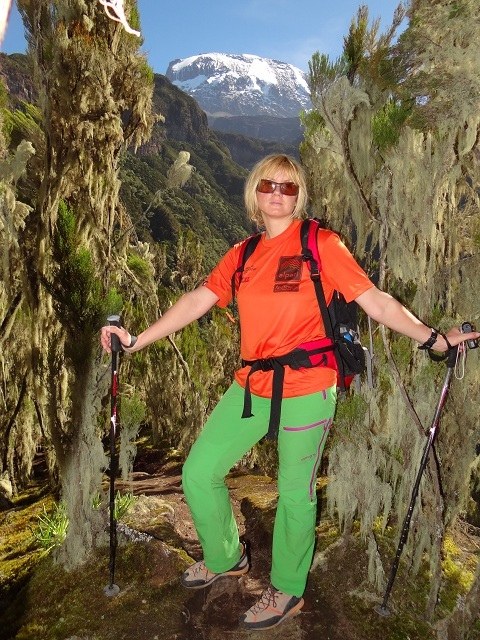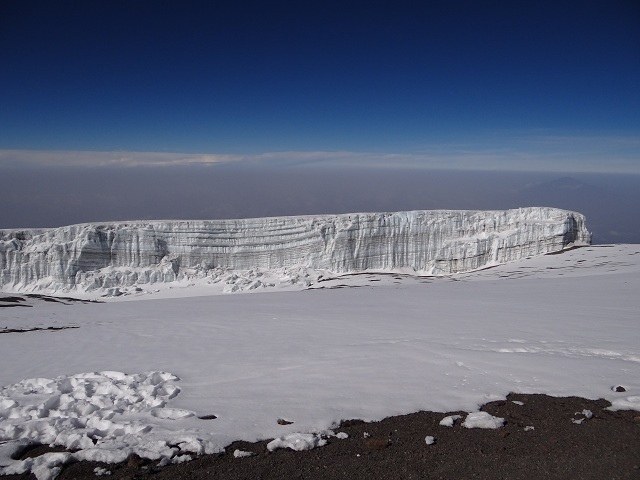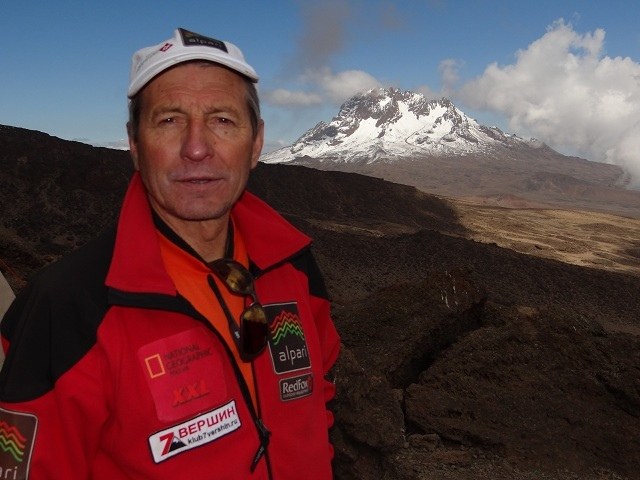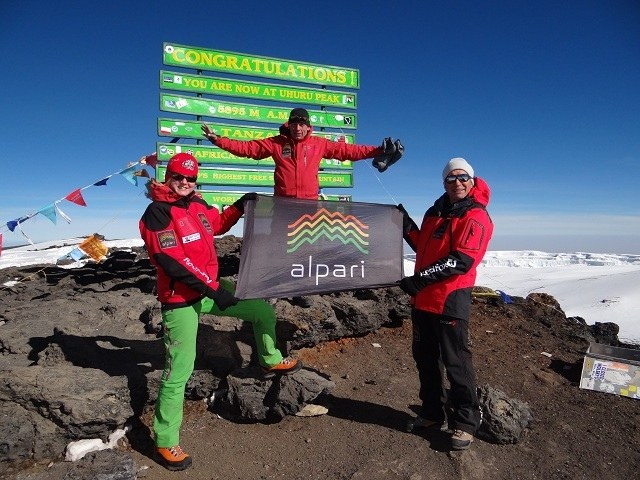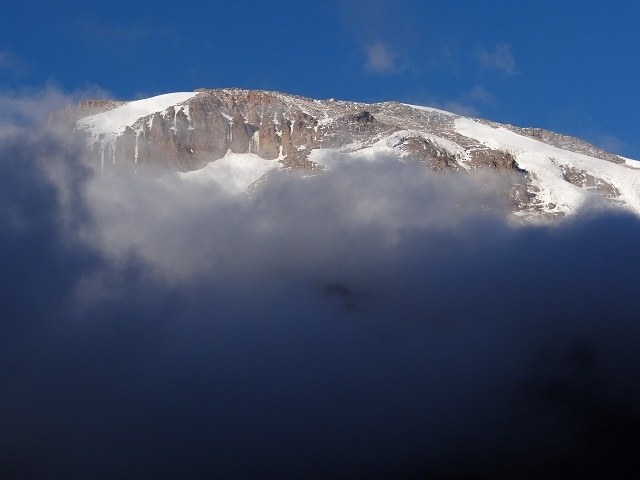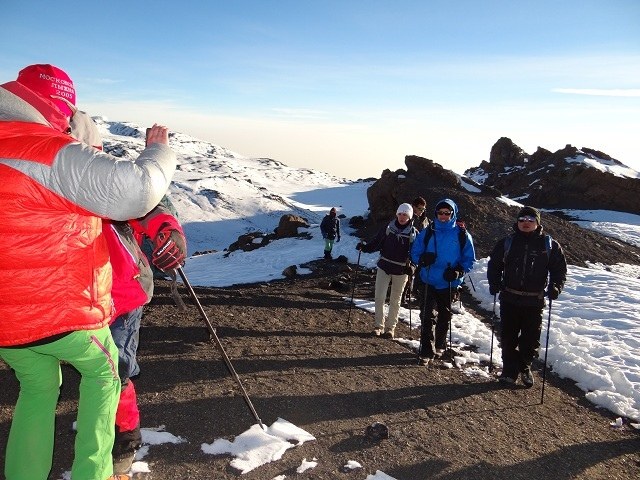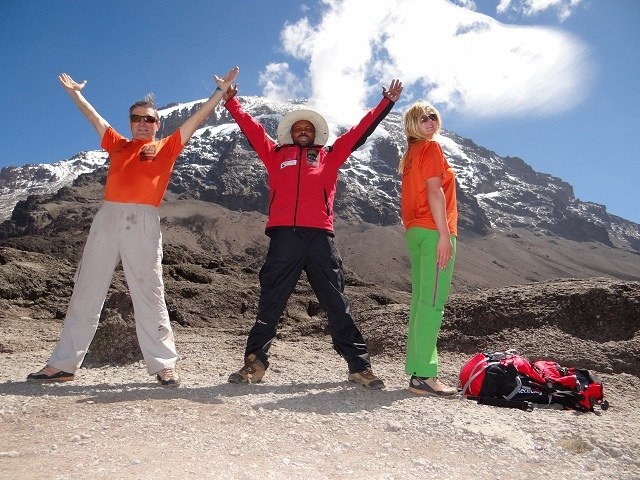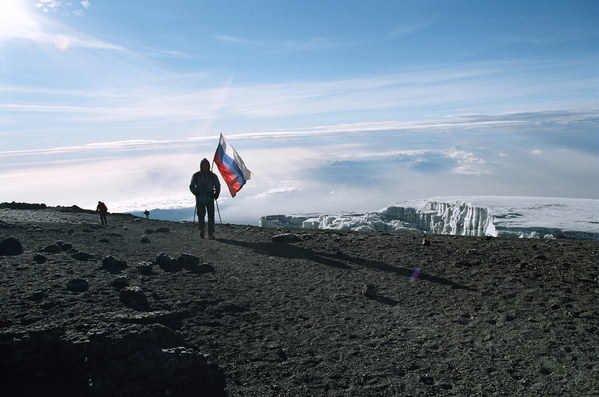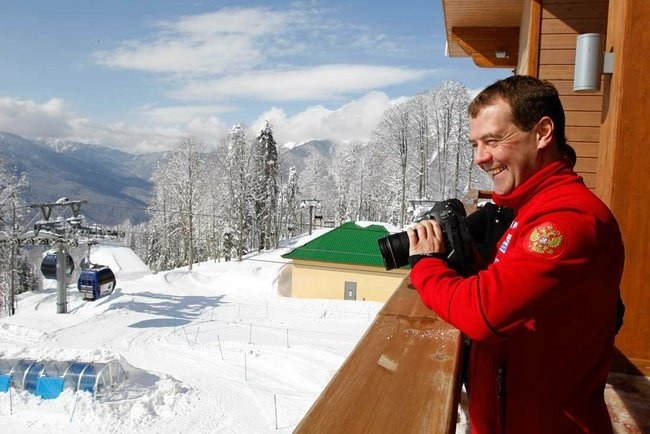All news: 2012
Happy Day in Lhasa
Everest.
Today the Everest team of the 7 Summits Club visited the Potala, the former palace of the Dalai Lama. All members were delighted. We note a good attitude, hospitality of Tibetans.Everything in this country seems unusual. Even the World Map ...
Today the Everest team of the 7 Summits Club visited the Potala, the former palace of the Dalai Lama. All members were delighted. We note a good attitude, hospitality of Tibetans.Everything in this country seems unusual. Even the World Map they have unusual ....
Alex Abramov and Mingma (Director 7 Summits Adventures) visited the STMA - Tibet Climbers Alliance, which organizes our Everest expedition. We met with the chairman of the STMA Mr. Chang. And the manager, whose name is Tsedron. The meeting was held in a friendly atmosphere.
Roman Gretzky and Alexander Lozhkin reached the North Pole
North Pole.
According to our data, the members of the 7 Summits Club Roman Gretzky and Alexander Lozhkin on April 11th, reached the extreme northern point of our planet. They came on skis in the program Last Degree. It was the first group of the ...
According to our data, the members of the 7 Summits Club Roman Gretzky and Alexander Lozhkin on April 11th, reached the extreme northern point of our planet. They came on skis in the program Last Degree. It was the first group of the season. Yesterday they had already flown fromCamp Barneo on Svalbard. We do not know whether they were present at the next unique event ...
Barneo Camp
Borge Ousland married at the North Pole
(Text Explorersweb) Here's some celebrity news from the Barneo Ice Station: Veteran Norwegian polar explorer Borge Ousland just got married at the Geographic North Pole, according to Lutheran wedding custom, with a pastor, candles and a cross made of skies.
Borge was dressed in national Norwegian dress. The bride, Hege was dressed in a warm, long, white dress.
The couple flew in from Longyearbyen,Svalbardto Barneo Ice Station where they boarded the Russian MI-8 helicopter to the North Pole. The proceedings lasted 30 minutes. After the ceremony champagne was served together with a colorful fireworks display.
Just in time to find out what the noise was about,UKskier Mark Wood appeared behind the pressure ridges. During the Antarctic ski season Mark skied solo from Hercules Inlet to the South Pole (10 degrees of latitude) and now three months later, skied the last degree to the North Pole.
The weather on the wedding day at Barneo (N89° 36' and E007° 34') 44.5 miles from the Pole was: Temperature -23°C , north-westerly wind of 3 m/s, and the visibility excellent.
In 1994 Børge Ousland became the first person to ski solo from land to the North Pole. He did a kite-ski traverse of the Arctic Ocean from Russia to Canada via the North Pole as well as a kite-ski traverse of Antarctica, from Berkner Island to McMurdo. Ousland and Mike Horn attempted the North Pole in Winter, unassisted, unsupported, starting January 22, 2006 and arrived at the North Pole March 23, only two days after sunrise. Other expeditions by Borge are ski expeditions on the Southern and Northern Patagonia Icecaps and Frans Josef Land, as well as a sail expedition around the Arctic Circle.
Arrival in Kathmandu
Everest.
On April 10, after a sleepless night, our team finally landed in Kathmandu, the capital of Nepal. Our layover in Delhi turned into a battle with the representatives from Jet Air, who, after rummaging through our luggage, decided that we ...
On April 10, after a sleepless night, our team finally landed in Kathmandu, the capital of Nepal. Our layover in Delhi turned into a battle with the representatives from Jet Air, who, after rummaging through our luggage, decided that we were carrying dangerous cargo and told us that they couldn’t take our equipment any further. We told them about our expedition to Everest and explained how important that hardware is to us.
We finally got them to come around, but only after giving them our autographs and a couple of Alpari t-shirts (and showing their managers the site).
When we got into Kathmandu, we were met with a flurry of commotion, rickshaws and rain.
This evening we are going to unwind with a nice dinner. Tomorrow we’ll pack up our things. On April 12, we fly out to Lhasa, Tibet.
-Lyudmila Korobeshko
Five minutes after we got the message from our captain, Maxim called to describe the team’s emotional state. Not everything he told us is suitable for print, so we’ll leave you with a few choice excerpts: “unpleasant”, “over weight”, “couldn’t get any sleep”, “Dusharin has gingivitis”.
We hope a decent meal will help cheer you guys up.
Start the 10th (anniversary) Everest expedition of the 7 Summits Club
Tonight most of the 7 Summits Club expedition members took off from rainy Moscow in the direction of Nepal. According to the plan, tomorrow they should be solemnly met at the airport in Kathmandu. And on the 12th April we have tickets to ...
Tonight most of the 7 Summits Club expedition members took off from rainy Moscow in the direction of Nepal. According to the plan, tomorrow they should be solemnly met at the airport in Kathmandu. And on the 12th April we have tickets to the capital city of Tibet Lhasa. From there it begins the path to the base camp of Mount Everest on motor vehicles. The first group of Sherpas from our expedition had already gone to arrange the base camp.
Guides and members of the expedition:
Permit Everest:
Guides (4):
Expedition leader Alexander Abramov (48), Sergey Bogomolov (61), Noel Hanna (Ireland, 45), guide and doctor Sergei Larin (51).
Members (16):
Visa Yusupov (60), Leila Albogachieva (42), Aznor Khadzhiev (40), Vladimir Korenkov (56), Magomed Aushev (59) Musa Hadziev (57) - a team of Ingushetia.
Ludmila Korobeshko (37), Ivan Dusharin (64), Maxim Shakirov (44) - Team "Alpari on the tops of the world."
Berdychowski Zygmunt Wladyslaw (Poland, 51), Schneider Nathaniel Raymond (U.S. 33), Pratt III Joseph Hyde (U.S. 56)
Igor Kadochin (42), Cyrille Muraviev (40), Fyodor Konyukhov (60), Vladimir Zaitsev (58).
Permit Changse (North Peak of Mount Everest) - 2.
Semen Deyak (50), Sergei Schekoldin (56).
Trekking Permit - 3.
Marian Surunchap (50), Machuca Tomochkanov (37), Maadyr-ool Khovalyg (64) – Tuva Republic Team
Elbrus on the pages of Alpinist and in reality. Welcome !
Elbrus.
Winter season on Elbrus smoothly into spring and summer’s Winter leaves Elbrus. No full satisfaction, but it was not disappointed. Sometimes it was not enough snow. Sometimes it was felt that not everyone decided to come. Again, ...
Winter season on Elbrus smoothly into spring and summer’s
Winter leaves Elbrus. No full satisfaction, but it was not disappointed. Sometimes it was not enough snow. Sometimes it was felt that not everyone decided to come. Again, the terrible tragedy of climbers on Elbrus ... But there was a lot of good. There are a lot changes for the better. And in the safety order, and in lifts. Our favorite hotel Povorot was worked almost "at five". And we look forward with optimism of the summer. However, it is spring. And we are waiting for the May holidays, waiting for the competition Elbrus Race of the Red Fox. It is always a big event. And this year it will record number of participents.
Latest news:
Completed a series of festivals in the Elbrus region. Management has prepared the region this year, a lot of pleasant surprises for the tourists. From 25 to 31 March it was held contest for ethnic artAltyn Square with the participation of teams fromRussia and CIS countries. On March 31 the baton took Elbrus Festival 2012, sponsored by the well-known musicians from Moscow and St. Petersburg: Michael Bashakov, Yuri Garin, Michael Kalinkin, Arthur Gladyshev, Dmitry Yurkov, the band "Kings of the Kitchen." Did the weather. Sunny days were followed by heavy snowfalls, so that skiers have an excellent opportunity for the free ride on the Cheget, and to be ridden on groomed slopes of Elbrus. And in the evening all gathered at the "Povorot."
----------
http://www.alpinist.com/doc/web12s/wfeature-elbrus
Elbrus
Casey O'Malley Posted on: April 6, 2012
[Photo] Mt. Elbrus courtesy of Mountain Madness/Savejko Photo.
It has been over one year since Mount Elbrus (5642m), Europe's member of the seven summits, was targeted in a terrorist attack. On February 18, 2011, two unidentified men stopped a van carrying five Moscow tourists to the Elbrus area—the men opened fire on the passengers after claiming to be plainclothes policemen. Three of the passengers died; two were hospitalized. Later that day, a bomb damaged a support tower for a cable car that travels up the side of Mount Elbrus. Thirty of the forty-five cars were damaged, but no people suffered injuries. The next morning, Russian officials diffused three improvised bombs containing 70kg of TNT, all found in a single car parked in the parking lot of a hotel at the base of the mountain.
The attacks happened just two weeks after Russian Federation President Dmitriy Medvedev unveiled a $15 billion plan to establish five ski resorts in the war-torn Caucasus Mountains, which guard the border between Russia and Georgia. Additionally, development for the 2014 Winter Olympics, slated to take place in Sochi, Russia, is in full swing less that 250km to the west.
In response to the February 2011 attacks, President Medvedev launched a fierce anti-terrorist campaign in the Caucasus. Military strikes canvassed the valleys. Regional governor Alexander Khloponin ordered a halt on tourist entry or exit to the area, claiming that the government needed to "clean up the territory" and only then "explain and show to everyone that it is safe in the Caucasus." A strong military presence covered the area and non-residents were not allowed to pass certain checkpoints. The Baksan Valley, which surrounds the southern aspect of Elbrus was closed off to all visitors.
The majority of Mount Elbrus's thousands of yearly visitors use local guides. The most popular southern route is often completed in as little as seven days, with chair lifts and snow cats carrying climbers sometimes as high as 4600m, depending on snow conditions. There are three successive chairlifts that constitute the beginning of this route: it was the second of the three, between stations Stary Krugozor and Mir, that was bombed. This moderate and popular route—the bread and butter of local companies' Elbrus tours—was unreachable all of 2011 because of the Baksan Valley closure.
In a typical seasons, routes from the north and west are far less travelled. These routes are more challenging and take more time to complete. They lack the permanent facilities, like the barrel huts and the "world's nastiest outhouse" (so dubbed by Outside magazine in 1993), that are encountered along the southern route.
The southern route remained closed for the entire 2011 season, leaving climbers to try the more technically demanding and less frequented northern and western routes. Military checkpoints sprouted along access roads to base camp on the northern side of Elbrus, enforcing inconsistent access rules. "Checkpoints on the north side were pretty much for show," writes Gleb Myasnikov, a guide who lives in the area. "One could go around the closed area on basic roads and it was not even a violation." Some companies directed their groups on a 90km detour around checkpoints. Sometimes with a cash payment officers would allow groups to pass by the checkpoints.
By August 2011, the northern route was officially opened and military checkpoints disbanded. The southern route was declared open on October 28, 2011. Though federal and local government promises no more lengthy access closures, many companies advise flexibility in route choice since the situation may change unpredictably. "This is the Caucasus, something is always happening," writes Myasnikov, whose company has not planned any short seven-day trips for the 2012 season. Instead they have opted for longer trips which give groups the flexibility to choose either the south or north route depending on access conditions.
The social climate of the Caucasus was rocked politically and economically by these measures. "The area is still dangerous may be even more than before...due to the year-long economic blockade, the local people became more desperate and chance of being robbed or killed for the reason of robbery is very obvious," writes Alex Trubachev, a guide based in Moscow whose company has halted their Elbrus tours. "Locals have lost everything—two seasons of nothing," agrees Myasnikov.
The region is not a stranger to conflict. Ethnic, religious and political tension dominate the history of the Causcasus; six separate wars have plagued the area since 1988. Elbrus itself has been a platform for political messages many times before.
In 1929 the burgeoning Soviet government founded an official mountaineering section of their tourism bureau, and Elbrus became the star of their programs. Over the next decades, the government sponsored mountaineering camps (alp'lageri) and training programs in all of the Soviet Union's mountain ranges to give citizens access to the mountains and training to reach their summits. The Elbrus region hosted the first alp'lageri, built in 1929, and many Soviet citizens visited each year to begin their training as climbers. With its moderate, non-technical climbs to the summit, it was reasonable for beginners to reach the summit after a brief training period—and its summit was the tallest on the continent. With every successful climb of Elbrus, Soviet citizens were standing on the top the Europe, and it was the Soviet government that made their ascents possible. The government portrayed each successful climb as a testament to the opportunities and enrichment that were offered to its citizens.
What is seen as contemporary Russian mountaineering style—large groups and siege-style climbing—is rooted in the curriculum of these structured Soviet mountaineering camps. The Soviet program focused on getting as many people involved in the sport as possible to manifest the government's Communist ideals. This meant that not only did many people visit the mountaineering camps each summer, but many people would participate in group climbs as well. For example, a 1935 climb of Elbrus saw 638 farmers reach the summit of Elbrus in a literal display of the heights that the lowly proletariat could reach with the support of their new government.
Massive group climbs became the staple on Elbrus, with a record being set in 1960 when an enormous party of 1,395 people ascended the mountain in honor of Vladimir Lenin's 90th birthday. The party placed a bust of Lenin on the summit (now only a concrete base remains).
During World War II, Elbrus invited international political statements. The German Gebirgsjaeger Unit, an elite mountaineering military division, left a Nazi flag on the summit in the summer of 1942. No battles occurred on the slopes of the mountain, and anecdotes report that Hitler was furious with the unit for wasting their time on such a stunt. But the lure of a flag on the highest mountain in Europe was unavoidable. After German forces left the area in January 1943, the Soviet army's first action in the Caucasus was to send a military group to the summit of the mountain to replace the swastika flag with the Soviet Union's hammer-and-sickle banner.
But these historical demonstrations on Elbrus were not violent. And that's what changed in the February 2011 attacks on Elbrus. "2011 was the first time that tourists and climbers became victims," writes Myasnikov. "Understand—Elbrus is a ski resort, not a war zone...but there are rebels in the Caucasus and to them, this is just their business. Nothing personal. And that may never change."
Alex Abramov from Katmandu
Hello! Alexander Abramov from Kathmandu, Expedition Everest - 2012. Today, Sergei Larin was due to arrive, but his flight was detained. He is still in Delhi. Yesterday 20 of our Sherpas had already left to the base camp. They will establish ...
Hello! Alexander Abramov from Kathmandu, Expedition Everest - 2012. Today, Sergei Larin was due to arrive, but his flight was detained. He is still in Delhi. Yesterday 20 of our Sherpas had already left to the base camp. They will establish a base camp. And with them went our guide Noelle Hannah. Tomorrow the first members of the expedition began to arrive. This two Americans, Nathan Schneider and Jozeff Pratt ... And the next day all of our expedition arrives. It's about 25 people, all gathered in Kathmandu. The 12th we all fly to Lhasa, and from there to the base camp. Good-bye! We are all well.
With Valery Babanov
Den Saveliev from the route to Mera Peak
We are at Khare at a height of 5000 meters, the weather is again, bad. Tomorrow the plan is one more part and then we come to the camp. Everybody feels fine. Yesterday we saw coming down the British. They have not reached the ...
We are at Khare at a height of 5000 meters, the weather is again, bad. Tomorrow the plan is one more part and then we come to the camp. Everybody feels fine. Yesterday we saw coming down the British. They have not reached the summit, said that met a kind of opened crevasse, which did not exist before. And they could not get around it ... Now we sit and think what to do next. Probably, we will take an aluminum ladder there.
African photography from Artem Rostovtsev
In Tanzania (Marangu route on Kilimanjaro and Manyara National Parks and Ngorongoro Conservation Area) walked and fell into the frame: Dennis Kiriyenko, Maria Kiriyenko, Alexander Poliakov, Natalie Petkina, Jacov Tebenkov,Nadezhda ...
In Tanzania (Marangu route on Kilimanjaro and Manyara National Parks and Ngorongoro Conservation Area) walked and fell into the frame:
Dennis Kiriyenko, Maria Kiriyenko, Alexander Poliakov, Natalie Petkina, Jacov Tebenkov,
Nadezhda Tebenkova, Maria Tokalova, Oksana Kozhushnaya, Dmitry Khodak ....
P.S. Weather was really excellent, and all were satisfied, and we coped with our tops, accumulated vivid impressions, which, perhaps, will be enough until the next trips
Our people in the first ski expedition to the North Pole of the season.
North Pole.
"April 1, 2012. "Barneo" reported that they have done 80% of the runway. After a day or two it will be possible to make a technical flight. Weather has improved - warmed up to -28 °, the wind died down, it is clear. "According to the ...
"April 1, 2012. "Barneo" reported that they have done 80% of the runway. After a day or two it will be possible to make a technical flight. Weather has improved - warmed up to -28 °, the wind died down, it is clear. "According to the preliminary plan, from April 3 it must start the first ski expedition to the Pole of the season. Two members of the 7 Summits Club Roman Gretzky and Alexander Lozhkin. Apparently, the delay in departure was inevitable, but it's a familiar situation for these places.
Everest pioneer's Olympic medal heads to summit
Everest.
UKclimber Kenton Cool will fulfil vow to take medic ArthurWakefield's Olympic medal toHimalayas90 years after tragic prior expedition Peter Beaumont. The Observer, Sunday 1 April 2012 British mountaineer Kenton Cool was ...
UKclimber Kenton Cool will fulfil vow to take medic ArthurWakefield's Olympic medal toHimalayas90 years after tragic prior expedition
Peter Beaumont. The Observer, Sunday 1 April 2012
British mountaineer Kenton Cool was sitting in the check-in lounge at Gatwick airport last Thursday with a locked waterproof box that, if all goes according to plan, will not leave his side until he reaches Everest's summit for a 10th time this spring.
The box contains the Olympic medal awarded to Arthur Wakefield, a medic on the unsuccessful 1922 Everest expedition that ended in tragedy when an avalanche killed seven porters.
If Cool succeeds in climbing the world's highest mountain again, he will have honoured a pledge by Lieutenant Colonel Edward Lisle Strutt, deputy leader of the pioneering 1922 expedition, made to Baron Pierre de Coubertin, who awarded the climbers medals at the 1924 Winter Olympics in Chamonix. Strutt promised to return to Everest and take a medal to the summit, something he never managed.
The attraction of Everest to Cool remains undimmed even if he is ambivalent about aspects of its commercialisation. A professional mountain guide who has climbed Everest more times than any otherUKclimber, Cool was also the first Briton to ski down an 8,000m peak.
"I still really like Everest. I enjoy working with my Sherpa friends. I get to see people at base camp – friends like American climbers who I never see except there. It feels a bit like escapism."
Cool is pragmatic, too. The high prices paid by clients to climb on Everest and the media attention that surrounds every Everest season has allowed him the freedom to be more selective about what he does in his own climbing and what guiding he does in a gruelling profession.
"When I first met my wife Jazz a few years ago she was clever about it and asked me where I saw myself in five, 10 years. I said I wanted to be climbing. When we got to 20 years, she said: 'You'll be crippled by then [by the punishing strain of guiding].'"
In some respects it is remarkable that Cool has done as much as he has. In 1996, he suffered a serious accident in Snowdonia, shattering the bones in his heels and damaging his ankles, which forced him to take a year out of the sport. He still has metal in his limbs, finds running difficult and struggles, he says, with an awkward gait. Despite that he will run one of the relays with the Olympic torch inLondonon 23 July.
After his recovery, Cool was recruited as an Everest lead guide after an ascent of a new route on Annapurna III – which saw his team nominated for the Piolet d'Or mountaineering award.
In an interview last year he recalled reaching the world's highest point for the first time. "The first client was just behind me, so I had five minutes at the top to savour the moment. It was a great sunny day so I sat there trying to pick out all the other nearby mountains. It was a mind-blowing moment."
This year he will be climbing only with a cameraman to record the ascent with the Olympic medal. "I didn't guide during my ascent last year either. I went up to prove that you could make a 3G call from the summit. With no clients it felt very free. I did the whole round trip in 23 days. It was wonderful."
As well as Everest, Cool has guided the polar explorer Sir Ranulph Fiennes up the north face of the Eiger.
What has been less easy, he admits, has been taking leave of his wife Jazz and 22-month-old daughter Saffron. "That was very difficult. I think for the wives and girlfriends who stay behind it is much harder. When you are on the mountain you have to be on top of your game to make sure that no one gets injured."
Two years ago, one of his clients, Bonita Norris, 22, fell close to the summit and lost the feeling in her legs, necessitating a gruelling rescue.
He is not sure he is finished with Everest yet. Next year marks the 60th anniversary since the first ascent by Tenzing Norgay and Edmund Hillary, and Cool would like to be involved with that
--
Kenton's Olympic Everest bid will be 'an emotional ride'
Bob Smith, Editor
Kenton Cool holds Arthur Wakefield's gold medal. Photo: Vitty Robinson
The British climber who has stood on the world’s highest summit more times than any of his countrymen is setting off on an Everest attempt that will be one his most special ascents.
Kenton Cool will board a plane this morning forNepal, carrying with him a precious disc of gold that he hopes will be in his pocket when he stands on the summit of the 8,848m (29,029ft) peak.
If the 38-year-old Gloucestershire-based mountaineer makes it to the top of Everest, not only will it extend his record of ascents to 10, but will also fulfil an Olympic pledge made 88 years ago.
It will, he says, be an emotional moment.
The World Mountain Guide will take with him an Olympic medal awarded to Arthur Wakefield, a member of a 1922 expedition which got within a few hundred metres of the top of Everest before turning back.
We spoke to Kenton Cool as he prepared for the expedition, which he hopes will see the climbing team set off for the summit push some time in May.
“I’m busy frantically trying to pack as we speak,” he said. “I always leave things to the last minute; it seems to work.”
He explained he and his friend Richard Robinson have been planning this year’s project for two years, ever since Robinson, a childhood friend of Cool’s wife Jazz, came across the pledge made by Lieutenant Colonel Edward Lisle Strutt, deputy leader of the 1922 expedition, to Baron Pierre de Coubertin at the 1924 Winter Olympics in Chamonix.
De Coubertin was the founder of the modern Olympic Games and awarded gold medals to all the members of the 1922 expedition at the inaugural winter games.
Strutt pledged that he would return to Everest and take the medal to the summit – a promise he was unable to keep.
The gold medal that will be heading toNepalwas handed to Kenton Cool inCanadaby the grandson of Arthur Wakefield.
Richard Robinson told us this expedition probably means more to Cool than anything else he has accomplished.
Summitnumber nine came last year. Cool's tenth, if it comes, will be special
“I’d probably agree with that,” the climber said. “Obviously the first time I ever went up there, the last 20 or 30 steps were incredibly special.
“But we’ve been working on this story for two years. One of the things that got me climbing was reading about the climbers in the 1922 and 1924 Everest expeditions. What these guys did was amazing when you consider the gear they had, the boots the equipment – absolutely incredible.
“I remember being quite young and thinking wow, that’s so cool; I want to be an adventurer, a climber like that.
“So to have an expedition now that directly honours those guys of 1922 is really important to me – really, really important.”
The team, which includes a top cameraman, will use the traditional route up Everest.
Cool said: “I’m going up the standard South-East Ridge, the route that Hillary and Tenzing took in 1953.
“In the team I’ve got Keith Partridge, who’s the cameraman who did Touching the Void and The Beckoning Silence. He’s going to record it all, which is going to be incredibly exciting.
“We’ve got a very good friend of mine who’s raising money for St James’s Place Foundation. He’s trying to raise half a million quid.
“And then it’s just my tried and trusted Sherpa friends.
“There will probably be six of us in our summit push.”
He said he is grateful to his sponsor Samsung, who also provided support for last year’s Everest expedition, which saw him Tweeting from the summit using a 3G signal for the first time.
“Samsung have been incredible coming on board to finance the whole thing,” he said. “Everest expeditions are not cheap, but Samsung have done an amazing job of providing me with a platform to do what I want to do.”
He added: “This is so special, it really is – 2012, the Olympics come toLondon– that’s going to be amazing. Unfortunately, climbing’s not really represented any more but climbing and mountaineering encompassed everything Coubertin wanted in the Olympics.
“It’s going to be an emotional ride. Fingers crossed, if we do it, it’s going to be a very, very special summit.
“I think it will be the knowledge that I’ve got a medal in my pocket that was awarded to a very, very special man, Arthur Wakefield. He was a phenomenal person, the one who was perhaps overlooked in that 1922 expedition.
“If you read anything about Arthur Wakefield he was this amazing character. He was a medic; he did some amazing things on the Western Front in the First World War.
“To have this medal which was awarded for his efforts and everybody else’s efforts in the 1922 expedition is going to make it incredible.
“I’m a pretty emotional guy anyway. I’ve been known to burst into tears at the top; it’s all swirling round.
“Then to have this other story – in my mind, it’s such an important thing. We kind of forget what happened in the past sometimes and it’s going to be a very emotional moment and I can’t even begin to think what it will be like.”
Cool knows Everest's summit well. Photo: Sotti CC-BY-SA-3.0
As someone who has made it to the summit of Everest nine times, he is familiar with the elation of getting to the roof of the world.
He said: “When you come over that final little section, I can see it now: you come round a little limestone outcrop, go round it then you just go up a very gentle slope and it plateaus out and it’s then only about 200 yards to the summit and that’s when you know you are going to make it.
“I think getting there in May this year with medal burning a hole against my thigh, it’s just going to be something quite special.”
Richard Robinson, whose mountaineering exploits extend only as far as tackling the Three Peaks Challenge, said the team had already had a goodwill message from Michael Palin on behalf of the Royal Geographical Society and he said it is rumoured London Organising Committee for the Olympic Games boss Lord Coe would be quite pleased to receive a phone call from the summit.
The British Mountaineering Council also gave the Olympic Pledge expedition its thumbs-up, saying: “ In doing so we hope the venture will help foster the adventurous spirit in others and inspire them to similar enterprises on Everest and other mountains.”
It’s a wish Kenton Cool shares. He told us: “My big thing is trying to get people into the outdoors. I’m passionate about the outdoors; I’m a mountain guide and I’m hoping that by getting behind the pledge and participating, we can get the next generation of climbers, mountaineers, hillwalkers out there and climbing their own little hills to start with.
“Then there will be some new person smashing all my records.”
Kenton Cool: 'passionate about the outdoors'
He joked about his advancing years. “I’m getting quite old,” he said. But there are many mountaineers climbing at ages way beyond his.
He added: “A guy I’m always massively impressed with is Victor Saunders. He’s now 62 or 63. He guided Everest the year before last and I think he’s going again this year. He’s in his 60s and he’s still capable of going to the top – incredible.”
He hopes to involve as many people as possible in the effort. “What’s going to be great too is you can pretty much follow it all online. Samsung have done an amazing job and they’re trying to get everyone to participate in it.
“We’re going to be Tweeting all the way. The Tweets will be coming in thick and fast and there will be fairly regular blogs on the Samsung website and on my own personal website as well.”
One of the hardest things for him, he said in one of his most recent Tweets, is leaving behind his daughter Saffron.
Kenton Cool, Keith Partridge and the rest of the expedition members are expected to set off from Base Camp on 14 April and will attempt to supply photos, blogs and Tweets, which will be uploaded to the Samsung site and Cool’s own website.
Alex Abramov and Denis Saveliev came to Katmandu
Start of 7 Summits Club - Everest Expedition Tibet 2012. Today early in the morning 7 Summits Club Expedition team leader Alexander Abramov arrived on Kathmandu. 7 Summits Adventure Pvt. Ltd. is organizing this expedition. Our ...
Start of 7 Summits Club - Everest Expedition Tibet 2012. Today early in the morning 7 Summits Club Expedition team leader Alexander Abramov arrived on Kathmandu. 7 Summits Adventure Pvt. Ltd. is organizing this expedition. Our expedition team will fly to Lhasa on April 12th.
There are total 25 Members and 19 Climbing Sherpa's in this group.
Denis Saveliev came to Katmandu with Alex. He will be a guide of three pregrams of our Club: Mera Peak, Island Peak and Base Camp Everest trek.
Information of: http://7summits-adventure.com
The beginning of spring season in the Himalayas
Today the big Himalayan season of the 7 Summits Club begins. In the evening our President Alexander Abramov flies to Nepal. In the first , he will prepare service for members and guides of our international Everest expedition. It will be ...
Today the big Himalayan season of the 7 Summits Club begins. In the evening our President Alexander Abramov flies to Nepal. In the first , he will prepare service for members and guides of our international Everest expedition. It will be our 10th time. This year, many well-known personalities will be part of the expedition. This is the famous Russian traveler Fyodor Konyukhov. Our great mountain climber Sergey Bogomolov, who will lead a team of Ingushetia. This is the trio of climbers working on the program "Alpari on top of the world." Ludmila Korobeshko, Ivan Dusharin and Maxim Shakirov will continue the recoed plan "7 summits in 300 days."
Also the guide of 7 Summits Club Denis Saveliev flies today in Kathmandu. He will run consecutively to the three groups, following different routes. First, it will be trekking and climbing the summit of Meru. Then, from April 21, it will be the program Island Peak climb and trek to Everest Base Camp.
It will be also a trek Annapurna Cercuit, which will be led by Olga Rumyantseva. And the big tour to Tibet, with a tour around Kailash (Kora), where the guides will be Dmitry Ermakov and Victor Bobok.
Artem Rostovtsev's team goes down after climbing Mt. Kilimanjaro
Kilimanjaro.
Hi, everybody! This is Artem Rostovtsev, practically from the top of Kilimanjaro. We were ten minutes ago on the highest point. All group left today on the storm … Unfortunately, two girls were compelled to turn back, without having ...
Hi, everybody! This is Artem Rostovtsev, practically from the top of Kilimanjaro. We were ten minutes ago on the highest point. All group left today on the storm … Unfortunately, two girls were compelled to turn back, without having reached the top ….
Our friend Lincoln Hall, who survived the Death Zone of Mt Everest, is died.
Everest.
Our sincere condolences to his wife Barbara and sons! Unfortunately, we didn't meet Lincoln more after expedition of 2006. We saw him in the film, read the book and thought that sometime the destiny will bring together us in Katmandu ...
Our sincere condolences to his wife Barbara and sons! Unfortunately, we didn't meet Lincoln more after expedition of 2006. We saw him in the film, read the book and thought that sometime the destiny will bring together us in Katmandu or in Sydney. Alas, the ruthless illness deprived of us such possibility. Lincoln Hall disappeared in history and took in it the worthy place.
From obituary
AUSTRALIAN MOUNTAINEER, LINCOLN HALL has died last night after a short but typically spirited battle with mesothelioma.
His wife Barbara and long-time friends and fellow mountaineers Tenzing Sherpa and Greg Mortimer were with him. Greg, the Australian Geographic Society's deputy chairman, phoned this morning to deliver the sad news.
"It was very peaceful in the end, around 11.45 last night," Greg said. "Lincoln got into quiet, rhythmic breathing - it was almost meditative - and then he quietly slipped away."
A brilliant, witty and open-hearted man, Lincoln was a key member of the 1984 Australian Everest Expedition that put the first two Aussies - Tim Macartney-Snape and Greg Mortimer - atop the world's highest mountain, and came within a few hundred metres of the summit himself. Lincoln's story of the expedition, White Limbo, is a classic of mountaineering writing and one of the best known of his several books. His successful 2006 climb of Mt Everest and famous survival epic after being left alone above 8000m in caught worldwide attention. His account of the story, Dead Lucky, was published in 2007.
Lincoln served on Australian Geographic's original editorial advisory panel in the 1980s, wrote several stories for the journal and was a great supporter of the AG Society and other Australian adventurers. His service to adventure was recognised by the Society in 2010, when he was presented with the Lifetime of Adventure award. He was also a founding director of the Australian Himalayan Foundation, which strives to improve education, health and environmental outcomes for people of the Himalaya region.
"I was lucky enough to walk with Lincoln in the Everest region in Nepal a few years ago and it's a trip I'll never forget," said AG editor and Society trustee Ian Connellan. "He was so funny and warm, and had such a wonderful, open, uncomplicated honesty. I'm terribly sad to know that I won't get to laugh with him again."
AUSTRALIAN mountain climber Lincoln Hall has died from mesothelioma. He was 56.
The world-renowned mountaineer, who was a member of the 1984 first Australian Everest expedition, died ''peacefully'' in Royal Prince Alfred Hospital in Sydney yesterday, said Australian Himalayan Foundation chairman Simon Balderstone.
His wife, sons and close friend and fellow mountaineer Greg Mortimer were with him.
Australian mountaineer Lincoln Hall with his wife Barbara in the Nepali capital after his rescue.
''Lincoln was well-known for his feat of survival on Everest in 2006, when, after summitting the mountain he collapsed just below the summit and had apparently died, only to be found alive the next morning by climbers on their way up the mountain,'' Mr Balderstone said.
Mr Hall's lawyer, Theodora Ahilas, from Maurice Blackburn, which recently concluded an asbestos compensation claim for Mr Hall, said his disease was allegedly linked to asbestos exposure as a child.
''Lincoln was an amazing man who was able to remember a remarkable amount of detail about his exposure to asbestos as a child,'' she said. ''It was alleged that in 1965 and 1966, Mr Hall assisted his father to build two cubby houses using asbestos cement flat sheets on their property in Red Hill in the ACT.''
Canberra Climbers' Association president Zac Zaharias said Mr Hall would always be regarded as a prominent climber. He said Mr Hall would be remembered not only for his amazing feats on Everest, but for his drive and moving writing.
He was also a compassionate man in his role as director of the Australian Himalayan Foundation, set up to help impoverished communities, he said.
In 2006, a rescue team of sherpas helped the veteran climber descend 1700 metres from where he had collapsed after a successful climb to the summit. It had been reported 24 hours earlier that Mr Hall had died on the mountain.
He had to be carried over several obstacles and restrained when he became delirious from altitude sickness. But word got back from the highest camp on the peak that he had walked the last few hundred metres into North Col camp before collapsing. He was left for dead on the mountain at 8700 metres when he broke down while descending from the 8848-metre summit. Those with him could not move him after he became delirious, a sign of oedema, or fluid on the brain. His companions in a Russian-led expedition were forced to leave him on the mountain overnight.
The next morning another group of climbers found him, still clinging to life, and a rescue party brought him down.
In a 2007 interview on ABC TV's Enough Rope, Mr Hall said he was attracted to climbing mountains because of the physical dangers, but also the challenges, like ''mental fortitude, physical fortitude, judgment''.
''It's the intensity of the experience, at a sustained level. The experience is incredibly intense because it is so dangerous,'' Mr Hall said. Away from the mountains, Mr Hall said his wife and their two sons made ''the world go round''.
Asked how she felt when her husband left the family to go climbing, his wife, Barbara Scanlan, said she knew she could never change that part of him. ''I guess climbing and, more so, mountaineering is such an integral part of Lincoln and what makes him tick,'' she said.
Start a new expedition to Ecuador
At Sunday, March 18 a new expedition of the 7 Summits Club started to Ecuador. The main aim is the ascent of the famous volcano Cotopaxi. A team consist of 18 people, all members of the well-known company "Mont", our regular partners. The ...
At Sunday, March 18 a new expedition of the 7 Summits Club started to Ecuador. The main aim is the ascent of the famous volcano Cotopaxi. A team consist of 18 people, all members of the well-known company "Mont", our regular partners. The name of the company shows its relationship with mountains and mountaineering. This is not surprising, as its founder and longtime leader it is a close friend of the 7 Summits Club Dmitry Moskalev. Dmitry was the second Russian (after Fyodor Konyukhov) who completed the Seven Summits program.
Guiding of the expedition to Ecuador will provided by an experienced guide of 7 Summits Club Victor Bobok. The coordinator of corporate programs of our Club Tina Taova will help him. Under the plan, the group will make two acclimatization climb on Pasachoa and Ilinitsa and then go to Cotopaxi.
In the final part of the journey, the expedition will go to the equatorial forests of Amazon jungle.
Photos from the American team Alpari
Kilimanjaro.
Climbing tour on Kilimanjaro, a group of Alpari officers from U.S. was successfully finished. All were on the top, although a month ago no one even thought of it. The weather was favorable, there was no rain during the daytimes, it was just ...
Climbing tour on Kilimanjaro, a group of Alpari officers from U.S. was successfully finished. All were on the top, although a month ago no one even thought of it. The weather was favorable, there was no rain during the daytimes, it was just a little wet at night. Snow and hail were only after the climb and a short rest at Kibo Hut. On the climbing day boys proved themselves as true heroes. None of them had never been before even at an altitude of 2000m, no one had any serious training. But all have shown tenacity and reached the summit. At the top the group met three Russian climbers engages in project "7 summits in 300 days" with the support of Alpari.
Artem Rostovtsev – a guide of the 7 Summit Club
Team:
Jaclyn Cole
David Makoso
John Wang
Jacob Plattner
Stan Klebaner
Mushegh Tovmasyan
Evening Party of the 7 Summits Club. Fedor Konyukhov and Others. Photos and Video ...
Everest.
We can say about a great success, even about a record that was set yesterday at a traditional evening of 7 Summits Club. Only registered users we had 70 persons. But there were those who came later, were not calculated. So the total ...
We can say about a great success, even about a record that was set yesterday at a traditional evening of 7 Summits Club. Only registered users we had 70 persons. But there were those who came later, were not calculated. So the total number of visitors at the event was about 200! Fedor Konyukhov plans were amazing. Until 2020, all is planed like this: "I come from a six-month campaign from the Arctic, and I am already waiting with a boat to cross Atlantic. I come from three month hike on camels, and I am already waiting for a solo submarine to reach America from Black Sea. "Great !”
All performances of our guides were extremely successful. It seems that most of the visitors appreciated it. Many did not want to go home, even after midnight. Well, we will wait for a new meeting. Hopefully, we can organize it in early summer, after returning from Everest.
The picture of Fedor Konyukhov was sold for 90,000 rubles (3000 dollars)
Dmitry Yermakov Antarctica 2011-12
Ludmila Korobeshko - Two summits from the program "Alpari - 7 summits for 300 days"
Climb with us
=
Ivan Dusharin Found Time to Write in His Journal
Kilimanjaro.
Alpari-life.ru. Africa… Kilimanjaro… Mountain climbing… These things just don’t seem to mix. But Team Alpari: On Top of the World is already here in Tanzania. It didn’t take long to figure out all of the ...
Alpari-life.ru. Africa… Kilimanjaro… Mountain climbing… These things just don’t seem to mix. But Team Alpari: On Top of the World is already here in Tanzania. It didn’t take long to figure out all of the logistical issues. The Seven Summits Club really knows what it’s doing. We’re already on our way.
It’s the 8th of March. In Russia, people are taking the day off. But we’re headed upwards, forging ahead along the steep and resilient jungle paths. There hasn’t been a single gentle slope or downhill section yet. We have a 1,300-meter climb ahead of us, a special Women’s Day gift. And this is only the beginning.
… An overnight, an early climb, then upwards again. And it’s only getting steeper. In all seriousness, we’ve had to actually “climb” part of the way. There are actually hooks in the rock. There may have even been a railing too at one point. We’re the only ones on this route. This isn’t a path for beginners. It’s really steep. Lyudmila is good at picking out the routes for the team. You can’t take it easy. You have to keep grinding away, even here on Kilimanjaro. We’re leaving the jungle now. We have a spectacular view of the mountain!
Fantastic! The beauty and grandeur of the mountain and the nature of the climb have been impressive. The rocky slopes, the icy ditches left by glaciers… it all feels so natural. Not many people get the chance to see this side of the mountain. We’re already at 3,900 meters. And it’s only been 2 days!
10.03 Today we have our most difficult climb ahead of us. As if it could get any harder! We have to climb to 4,600 meters, and in doing so, circle around to the other side of the mountain. You can’t make it to the summit from this side. Normally, this takes 2 days or so, but we need to do it in one. Oh well. We’re on our way. But wait! There’s a 200-meter rock wall ahead of us. It’s scary, something we’re not used to seeing. But it should be interesting. We’ll just have to climb it. Looking at the wall from the side is frightening, but it can be done. The rocks are monolithic, with passes, steps and safety hooks, so it should be relatively safe. We made it. Now it’s back down again, then up… By the evening, we made it to where we needed to go. We’ll have dinner and go to sleep.
11.03. We left at 1:30 at night to continue our ascent. With yesterday’s difficult climb and our anxiety before our storm of the summit, we didn’t get much sleep. But our commander is strict. We left at 1:30 sharp, the moon illuminating the path ahead of us. It all feels kind of mystical – the stars, the mountain, the glowing moonlight… We’re getting higher and its getting colder. Strange, huh? Africa… cold? Anyways, it’s cold. We’re wearing our down jackets. That helps a bit. But we still have to shake our legs periodically. It’s either that or “I froze in Africa”. And that wouldn’t be too funny, would it?
Just before 6:00 we made it to the brim of the crater. This is where we planned to meet the Alpari US team, which took the classic route. They weren’t there yet. We waited an hour and a half. We were about to freeze to death. Naturally, we were elated when they finally showed up. We continued onward together, reaching the summit of Kilimanjaro (5,895 m) in full strength. Hooray!
Photos and videos from Kilimanjaro
Kilimanjaro.
The first visual impression of the expedition "Alpari on top of the world." The first batch of photos and a video clip. No comments. Simply beauty. More pictures can be viewed at the project site: http://www.alpari-life.ru/kilimanjaro/ ...
The first visual impression of the expedition "Alpari on top of the world." The first batch of photos and a video clip. No comments. Simply beauty. More pictures can be viewed at the project site:
http://www.alpari-life.ru/kilimanjaro/
President Dmitry Medvedev led a meeting dedicated of tourism in the Northern Caucasus
Elbrus.
Today (11.03. 2012) Krasnodar hosted a meeting chaired by Russian President Dmitry Medvedev dedicated to the development of Russian resorts. The meeting was also attended by Deputy Prime Minister of Russia Alexander Khloponin, Economic ...
Today (11.03. 2012) Krasnodar hosted a meeting chaired by Russian President Dmitry Medvedev dedicated to the development of Russian resorts. The meeting was also attended by Deputy Prime Minister of Russia Alexander Khloponin, Economic Development Minister Elvira Nabiullina and Minister of Sport, Tourism and Youth Policy Vitaly Mutko, as well as heads of the regions of South and North Caucasus districts and representatives of foreign companies.
After receiving the data from Vitaly Mutko that only 59 subjects of the Russian Federation have developed a tourism program, Dmitry Medvedev has demanded to develop a realistic program for the development of tourism in every region of the Russian Federation, stressing that "there should be mutual responsibility."
The leaders of Dagestan and Ingushetia asked the president to increase the authorized capital of the "Resorts of the North Caucasus" in connection with the recent inclusion of these two republics in the program, RIA Novosti reports. Medvedev instructed the Minister of Economic Development Elvira Nabiullina to prepare a final report with calculations of how much money will it take to develop resorts in the two republics.
Nabiullina promised to prepare a report, but added that according to the preliminary assessment, "the inclusion of Dagestan in this program will cost about 40 billion rubles from the federal budget alone."
Russian President Dmitry Medvedev supported the presidential envoy to the North Caucasus Federal District Alexander Khloponin on the need to develop the Caspian coastal area with beach resorts.
The participants of the meeting discussed a wide variety of issues related to the development of tourism in Russia.
France ready to invest in N Caucasus
French companies are prepared to massively invest in helicopter building and also in the hospitality and holiday industries on Russian territory.
French presidential envoy for Russia ties Jean-Pierre Thomas spoke about this at a meeting with President Dmitry Medvedev in Krasnodar in southern Russia on Sunday.
He sits on the board of a joint company which is hoping to attract at least $10bn worth of investment in the holiday industry in the Russian Caucasus.
(TASS)
Russia developing resorts in the North Caucasus
Foreign companies have invested over 3 billion U.S. dollars to develop resorts in the North Caucasus. Russian investors have contributed almost a similar amount. Russian President Dmitry Medvedev revealed these figures addressing a conference in the southern Russian city of Krasnodar dedicated to promoting tourism in the North Caucasus.
Several resort zones in Southern Russia united under the “Resorts of the North Caucasus” will be turned into winter sports and year-round resorts. These zones are Lagonaki, a beautiful plateau located in Krasnodar region and Adygee, Arkhyz in Karachaevo-Cherkesia, Elbrus-Bezengi in Kabardino-Balkaria, Mamison in Northern Ossetia-Alania, Matlas in Dagestan and Tsori and Armkhi in Ingushetia. A network of resorts will also appear along the Caspian Sea shore in Dagestan.
The “Resorts of the North Caucasus” are a grandiose project in terms of territory and the amount of construction work. The overall length of Alpine ski runs exceeds 1,100 kilometers. Despite difficulties, many investors, especially foreigners, expressed readiness to go into this project. This has become possible owing to the businesslike work of the government which has done a lot to attract investors and partners, says Dmitry Medvedev.
“A government mechanism supporting the project was developed and amendments were made to the federal law on special economic zones in the Russian Federation. This law paves the way for solving the most difficult tasks. There was no such mechanism before. The residents of tourist and recreation type economic zones in the North Caucasus enjoy tax and duty breaks. Concrete results of this activity can be seen even now. The construction of the year-round resort of Arkhyz is in full swing, and it plans to receive tourists in the winter season of 2012. Construction of other resorts is now underway,” says Dmitry Medvedev.
At present, some of the tourist projects in the North Caucasus have already worked out their business plans with leading foreign companies. Among these are the French bank Caisse des Depots et Consignations, South Korea’s state-run energy company Western Power and companies in Singapore. The prestigious MIRIM Asia Awards-2011 International Developers competition assessed the project, describing it as the best project for the future.
Despite the rosy picture there are many problems related to the involvement of investors and the launch of construction, says Dmitry Medvedev.
“Among these problems are providing the resorts with contemporary infrastructures, their transport accessibility, the construction of roads, railways and airports. All this is very important for the attraction of tourists to the North Caucasus and the Caspian Sea. We will have to reconstruct at least 6 existing airports and build four new ones. It’s crucial to increase the passenger flow. At present, the capacity of the airports in North Caucasus is about 20,000 passengers a day. But this figure has to be increased five times to implement the large project, Dmitry Medvedev said.
The “Resorts of North Caucasus” is a very expensive project. It is financed under the principle of government and private partnership. At present, only a part of the necessary amount has been collected. According to experts, investments in the North Caucus tourist project will be paid off in 5-10 years. In short, the profitability of the project is up to 15 percent.
